It started when I broke a cup by accident, and got interested in the shards. Then I broke a jar on purpose, and then another one more skillfully. I put the pieces on a table outside and started looking at them—into them—through a lens under a bellows. I added a mirror, and then another mirror. Over days the world began to add things: frost, rain, dew, dust, deciduous castings-off from the tree canopy. The pieces seemed to hold larger sights in themselves, equally pacific and violent—still with the concord inherent in glass, also pronouncing the findings of shattered translucence, as if each seared edge were its own broken-off aphorism. The sun revolving its light around the sky changed it all constantly.
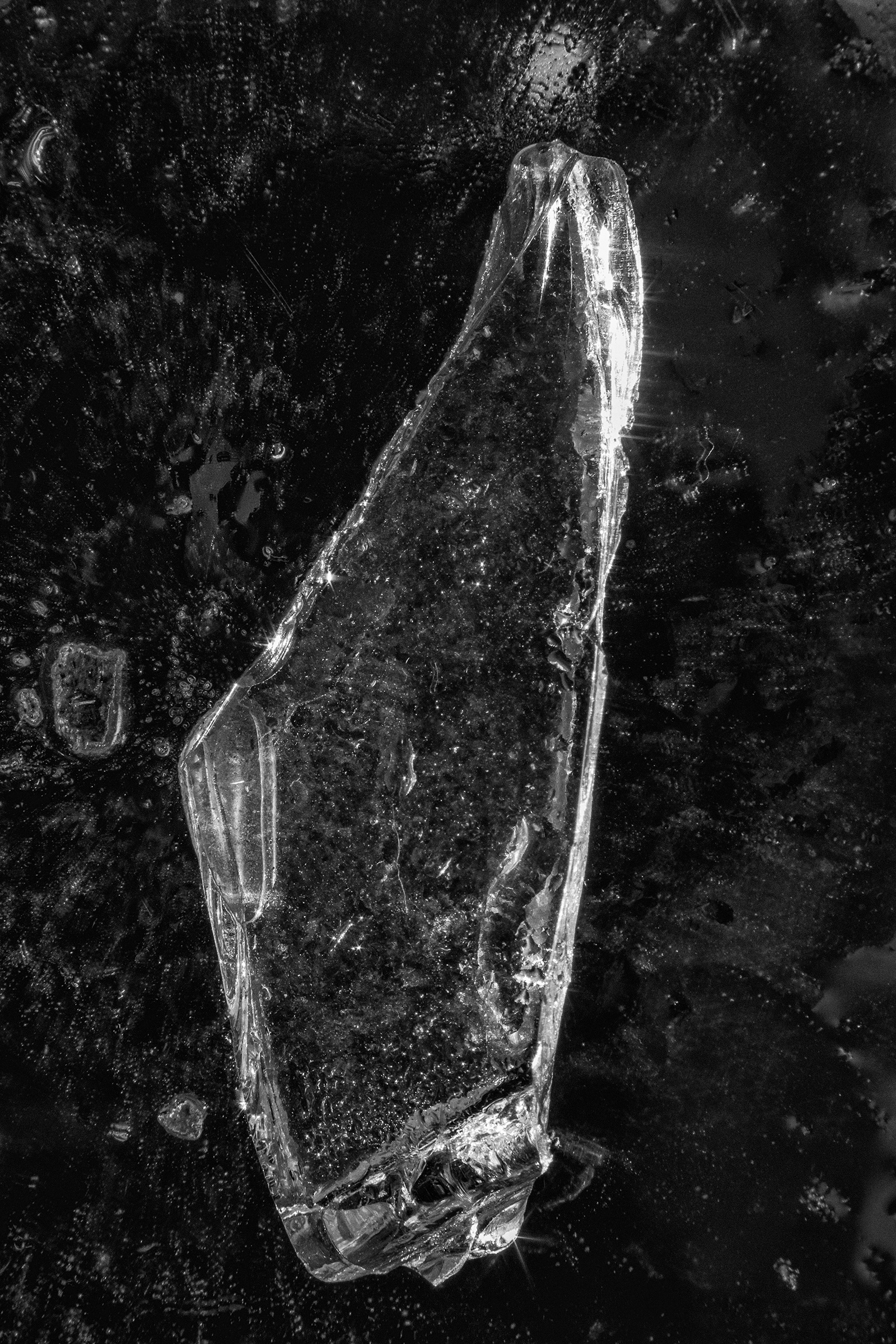


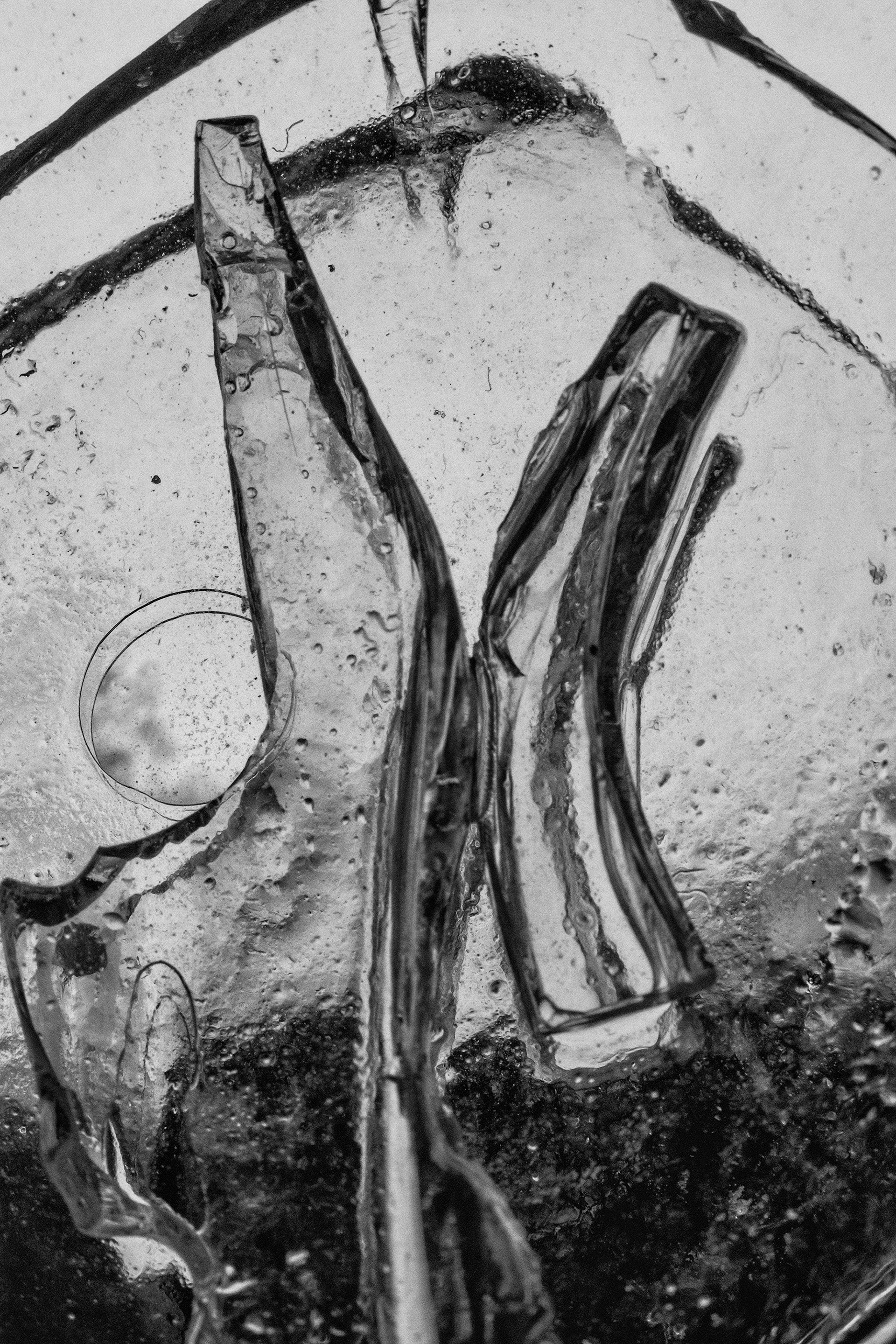
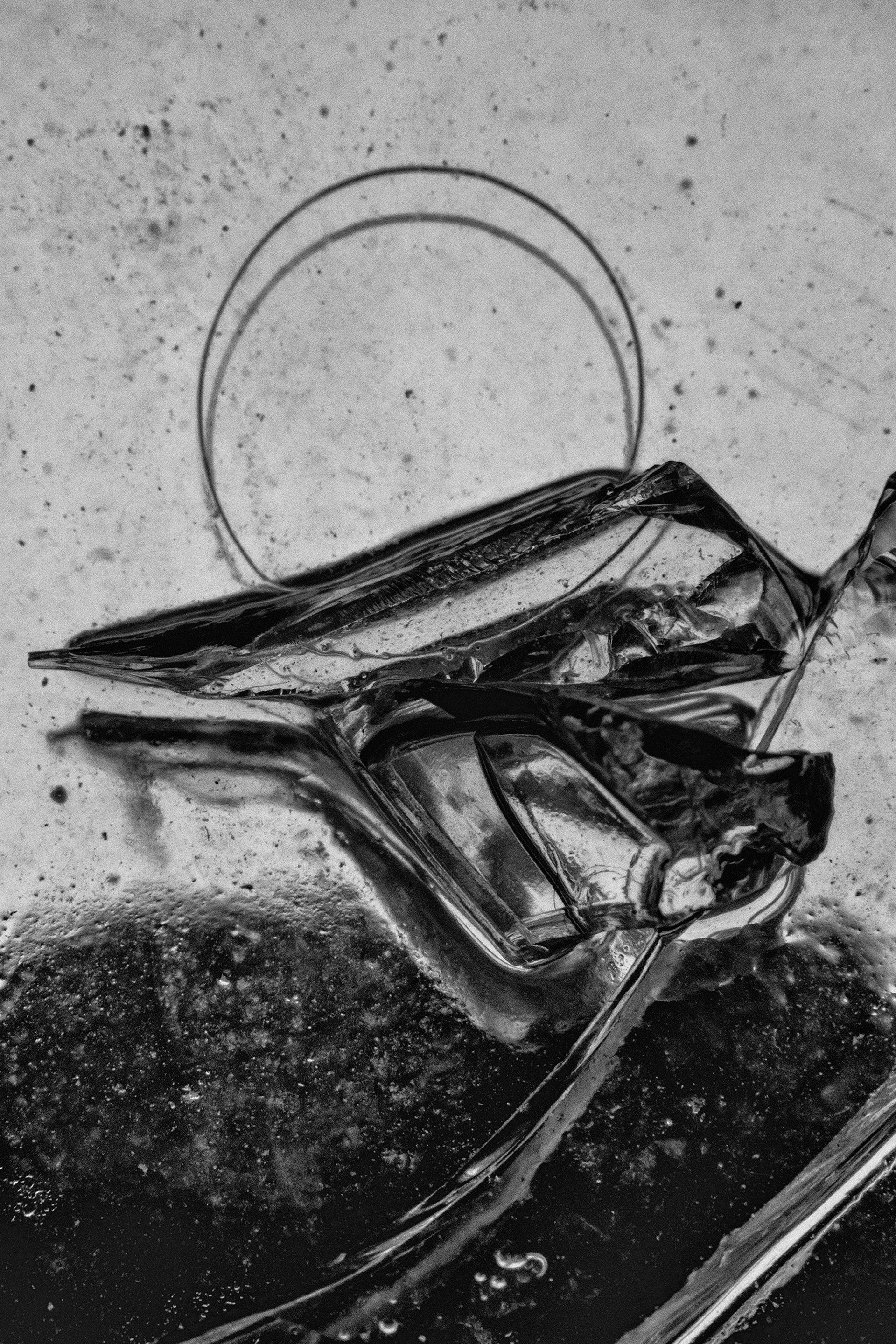
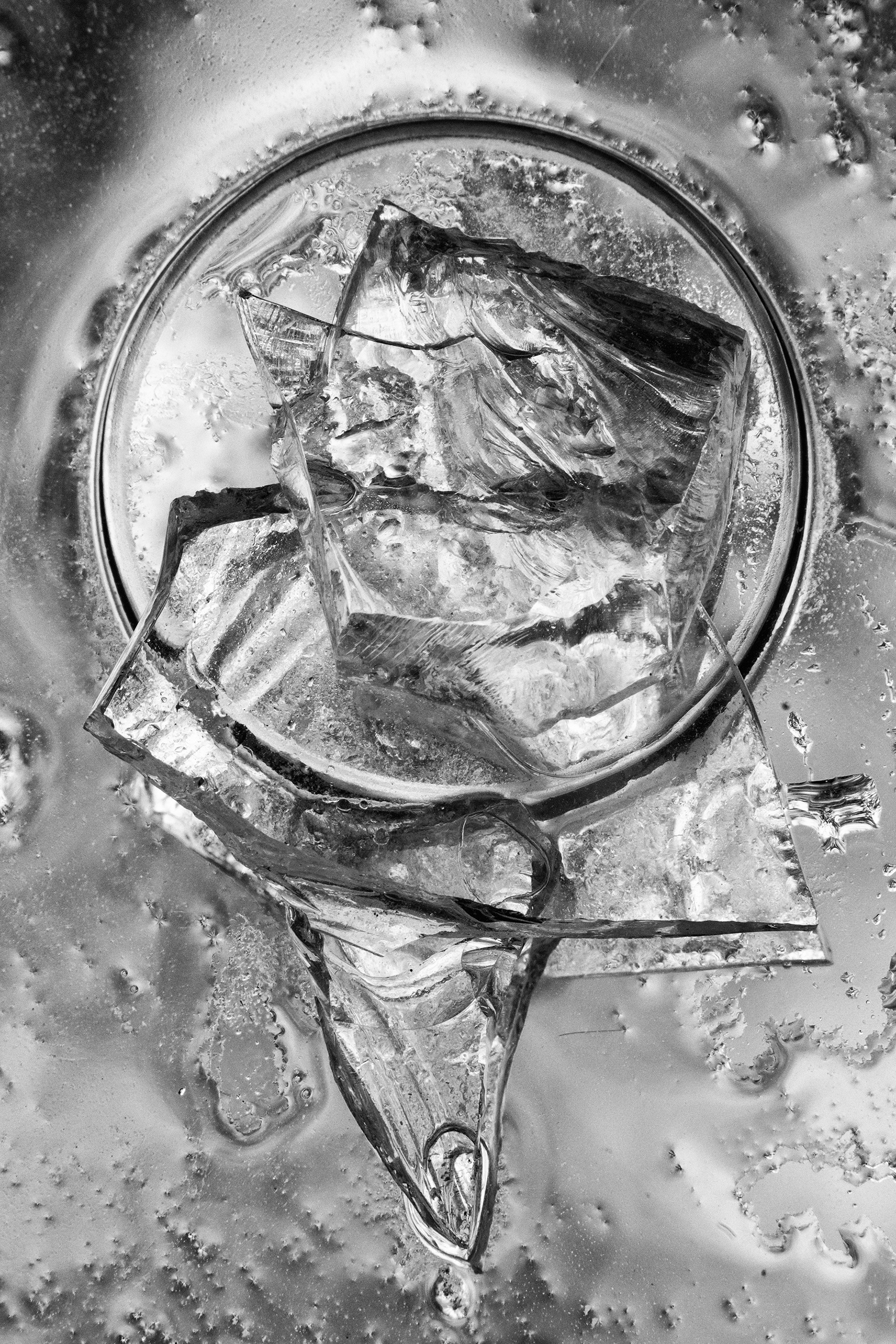


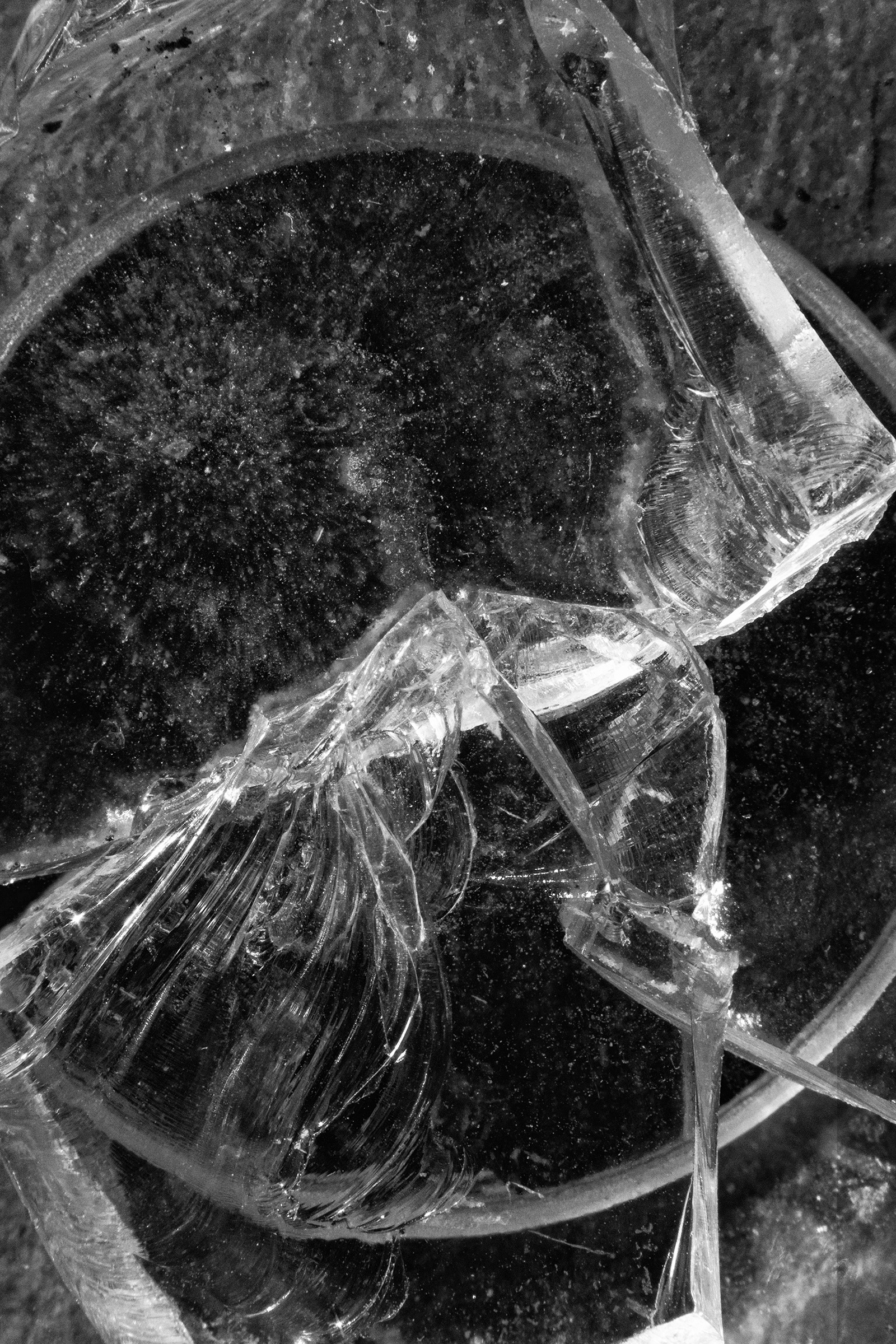
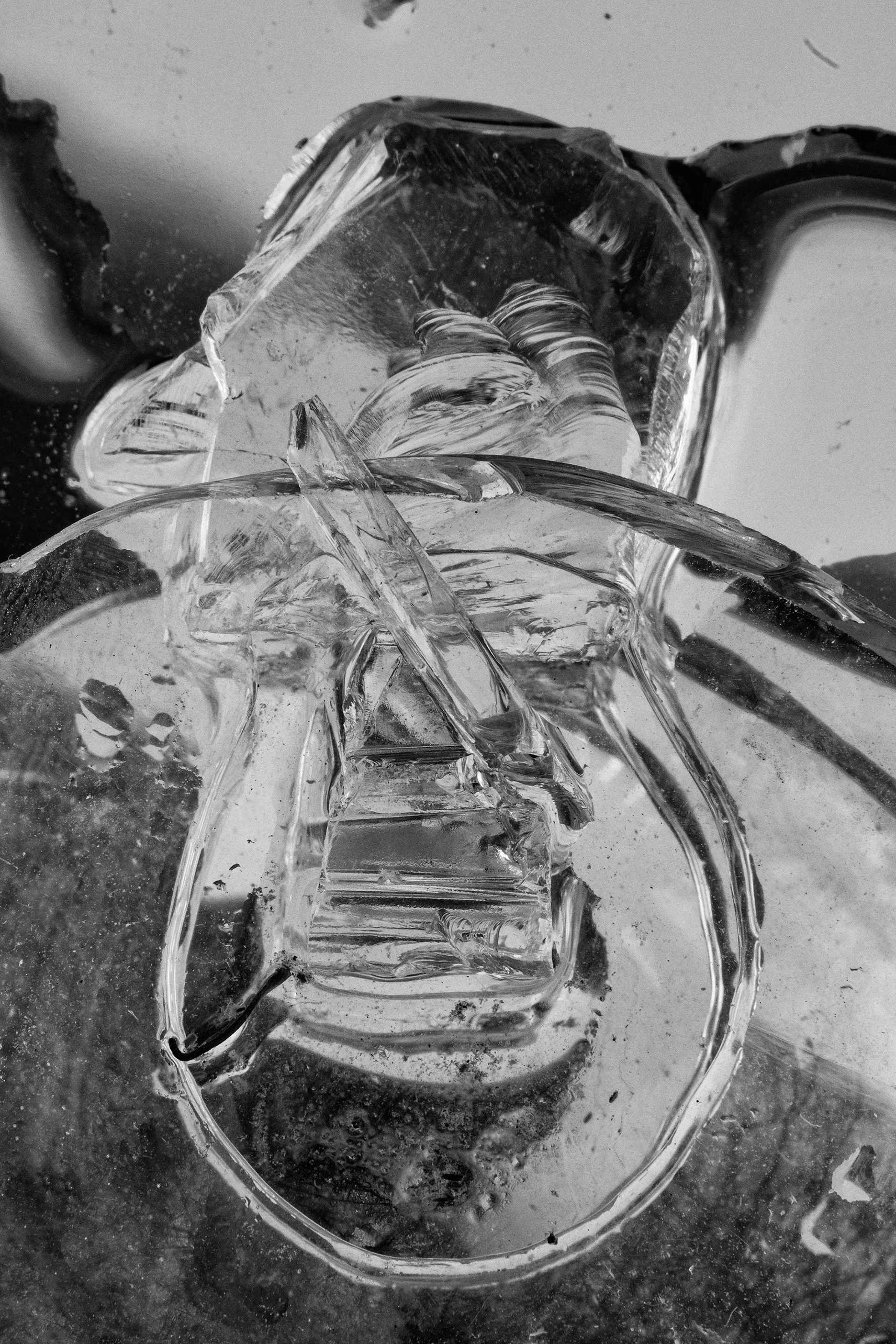
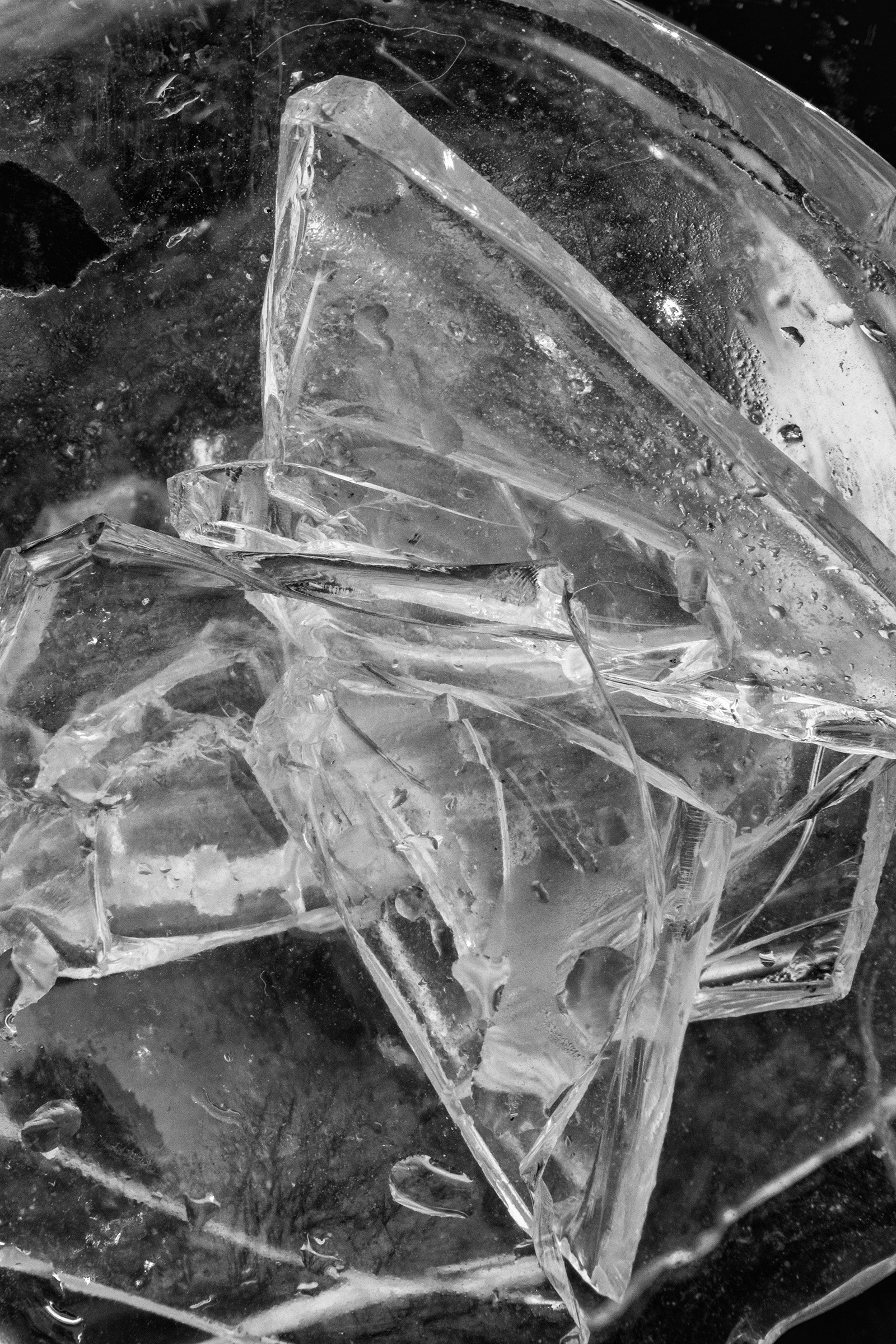
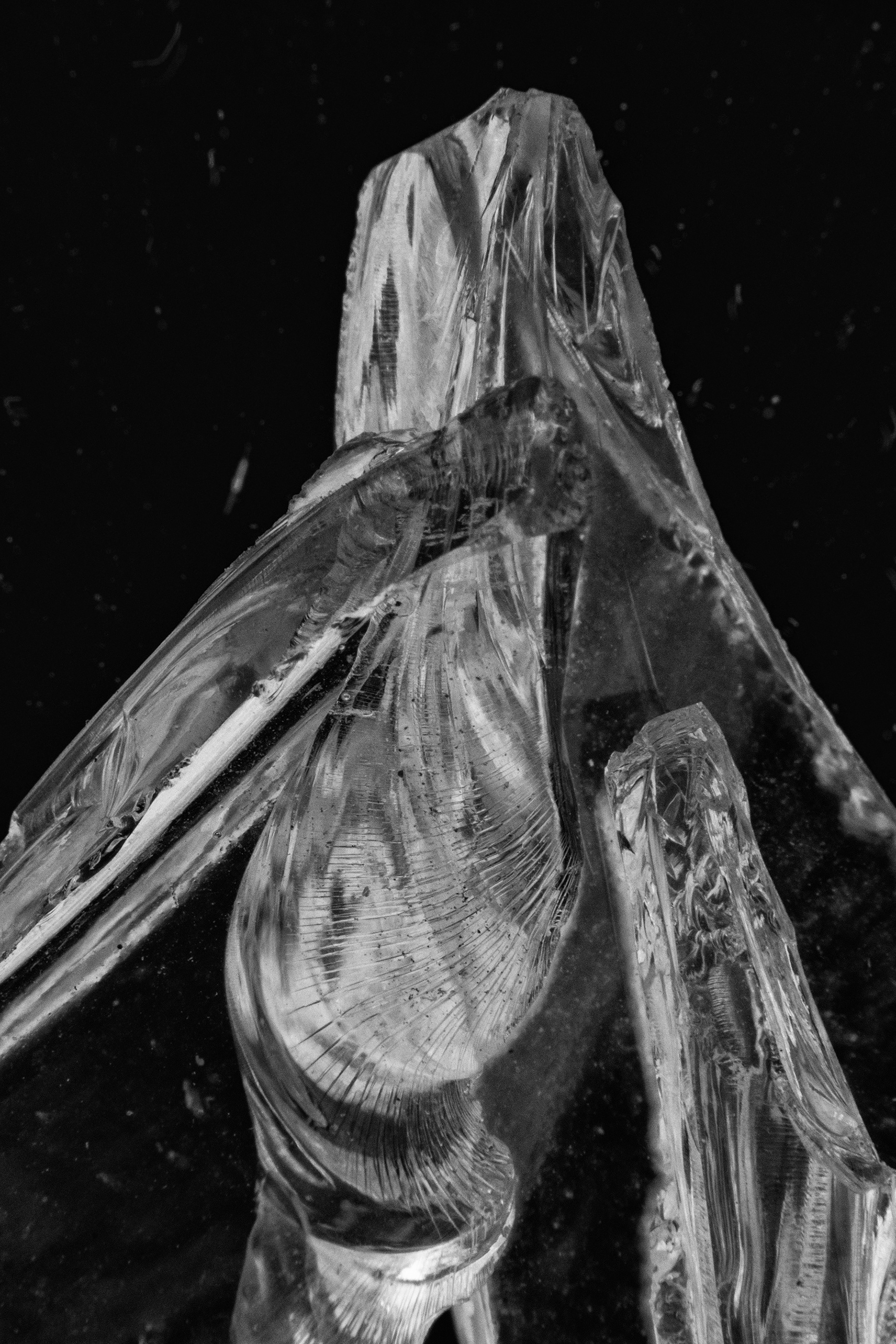
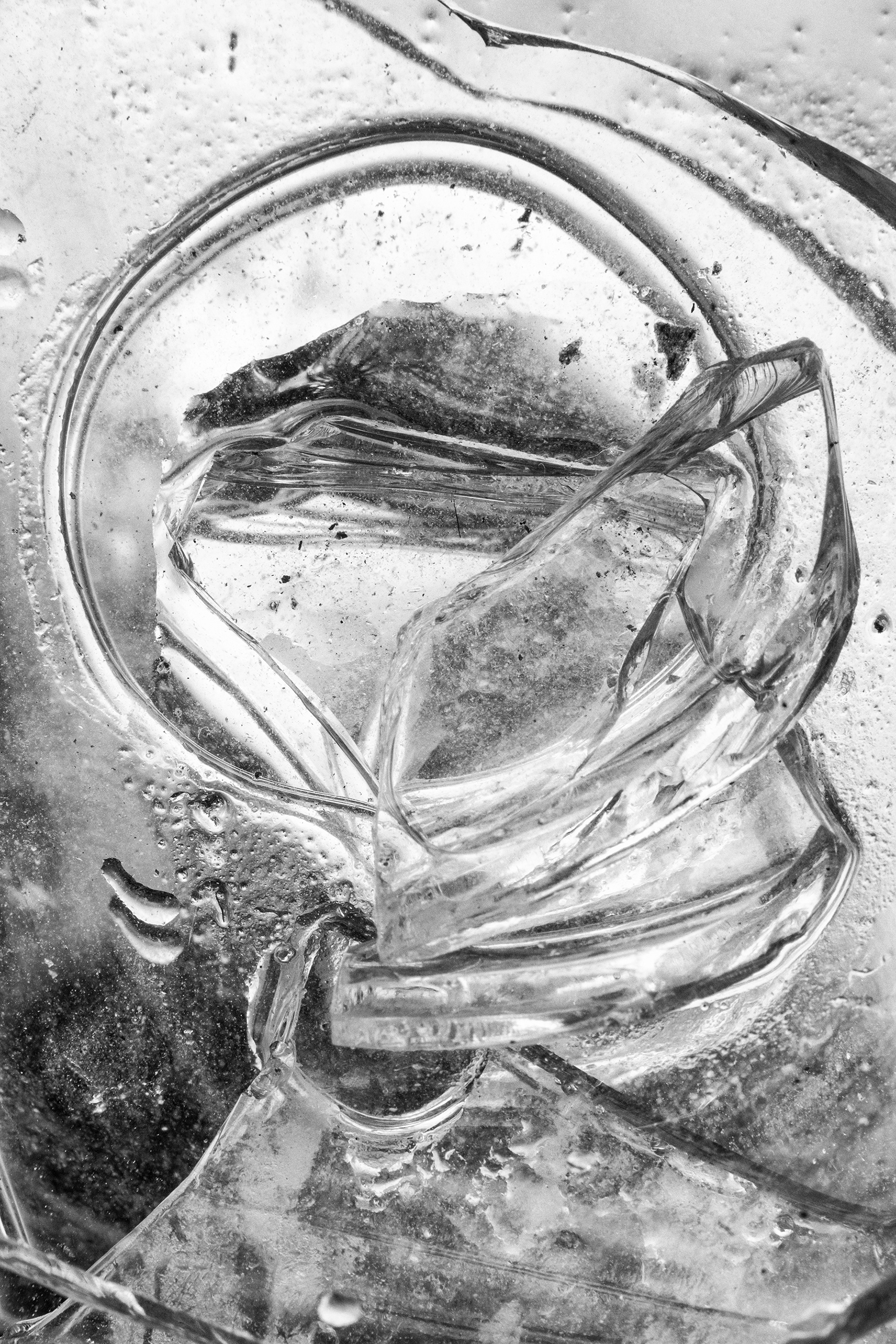



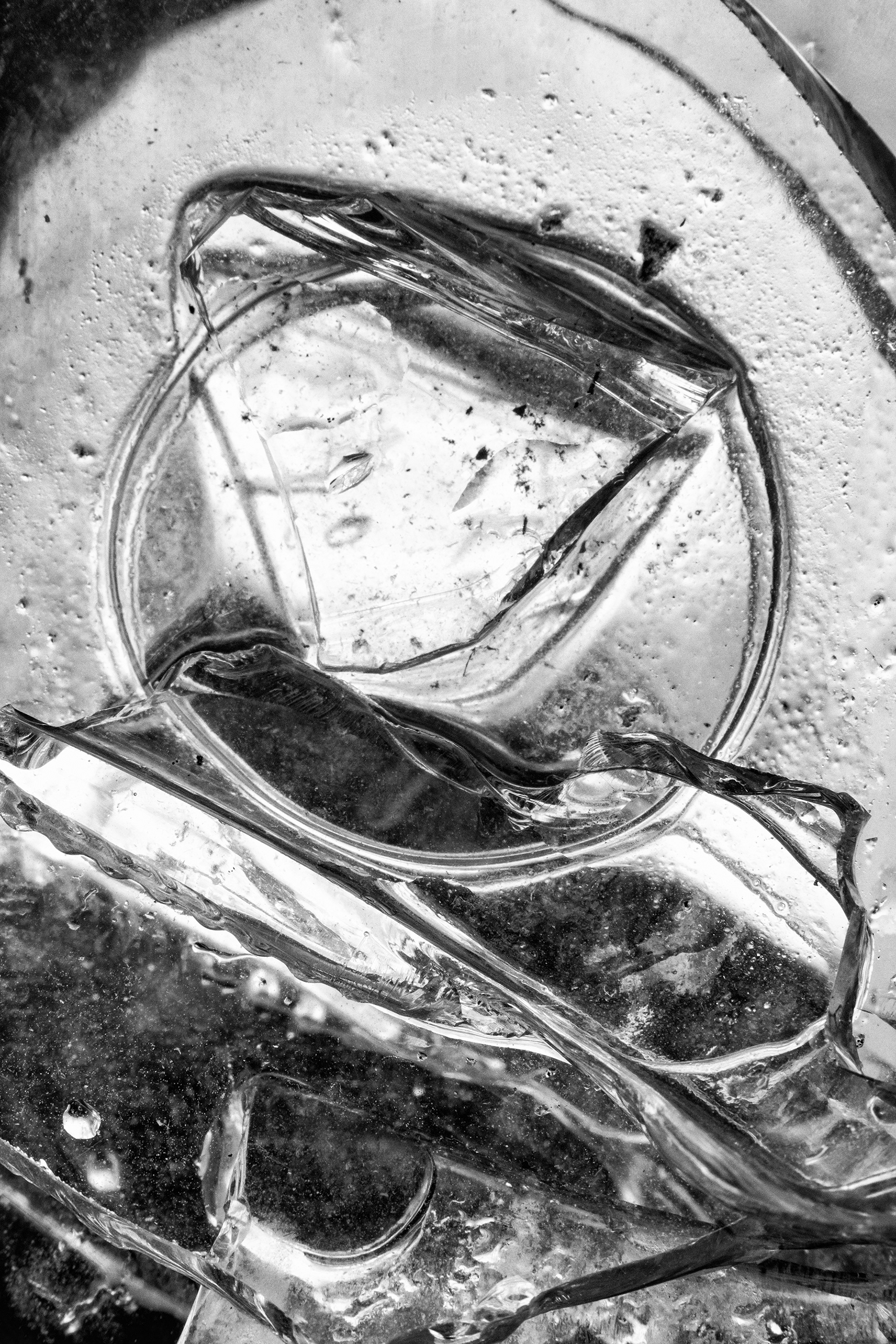
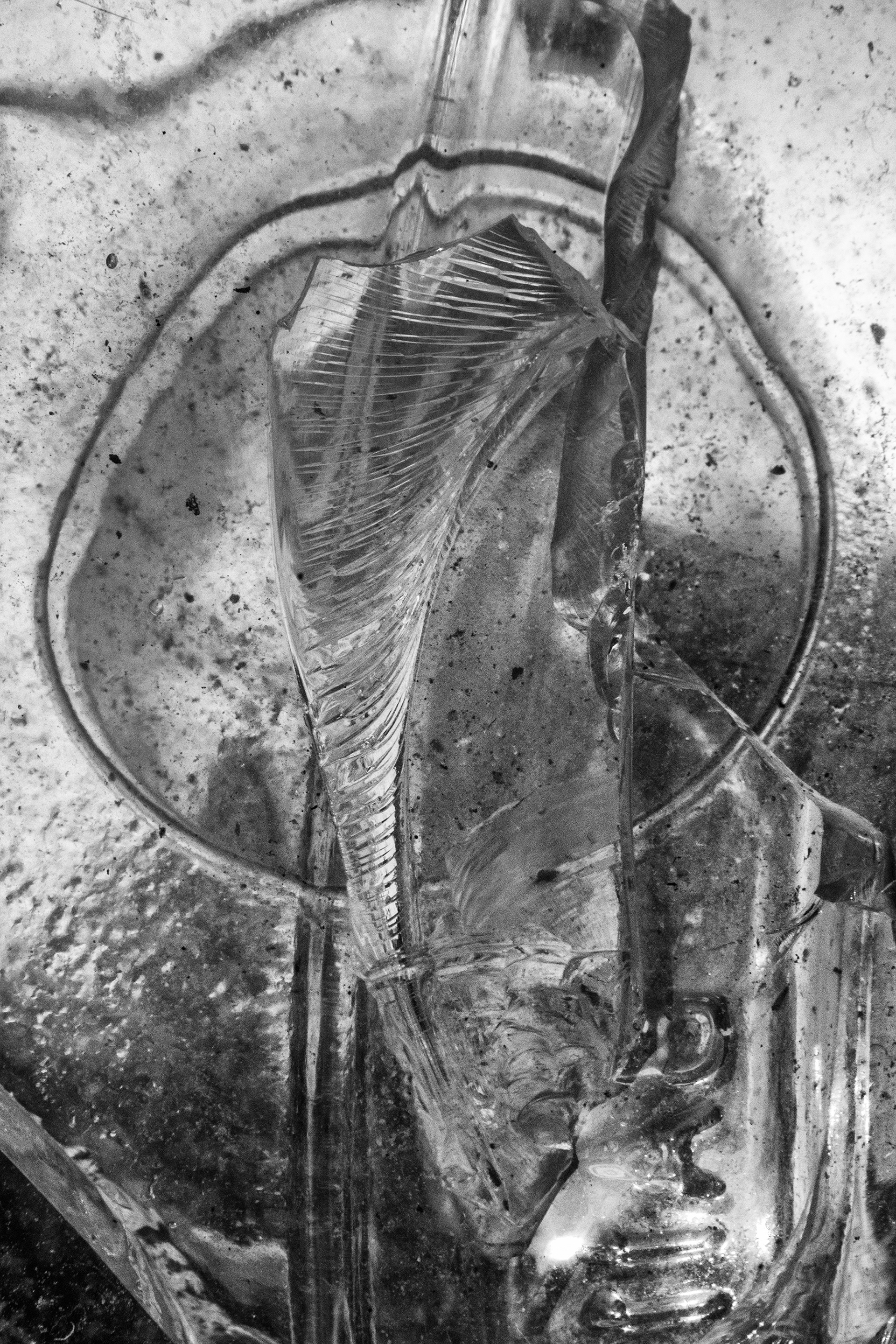
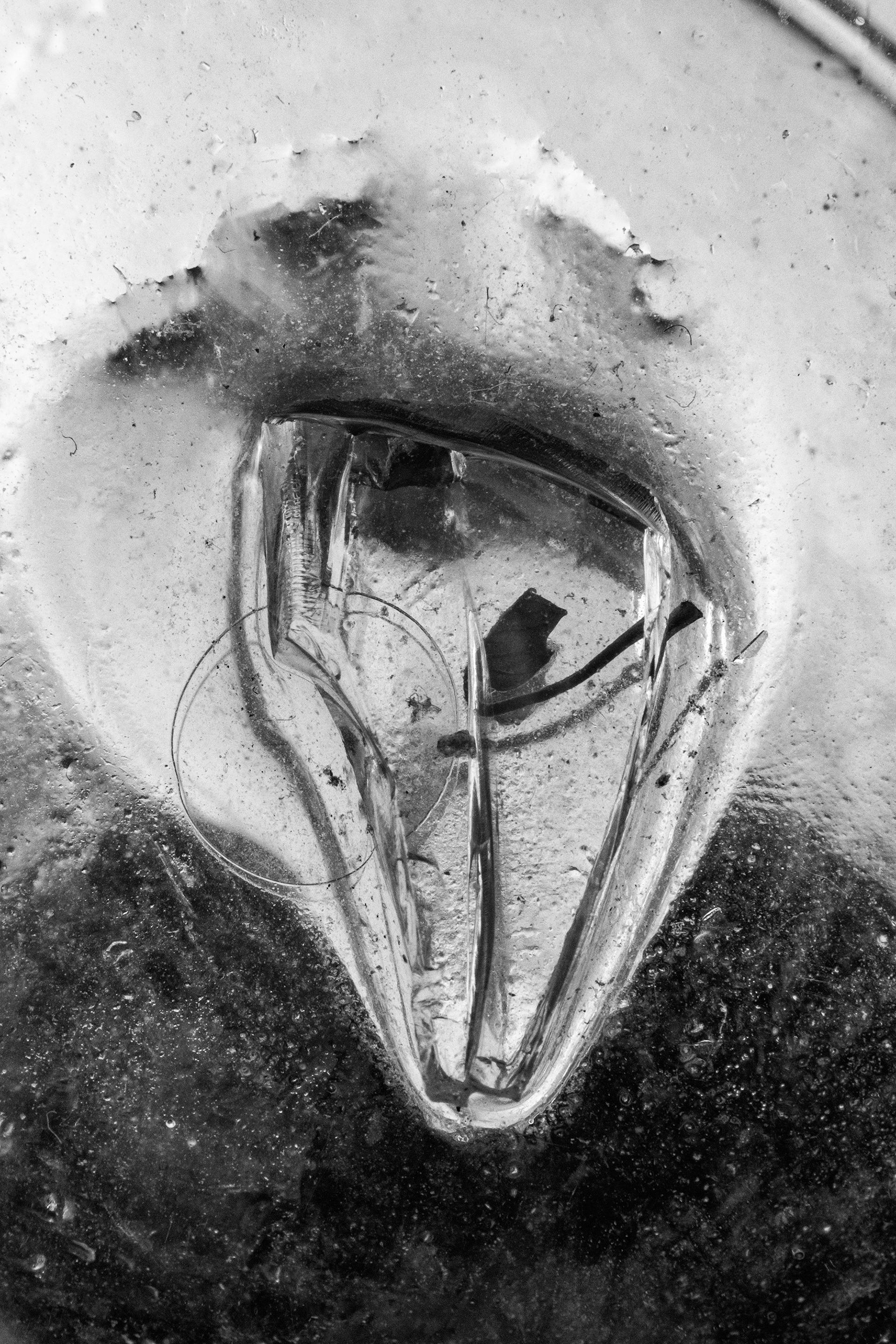
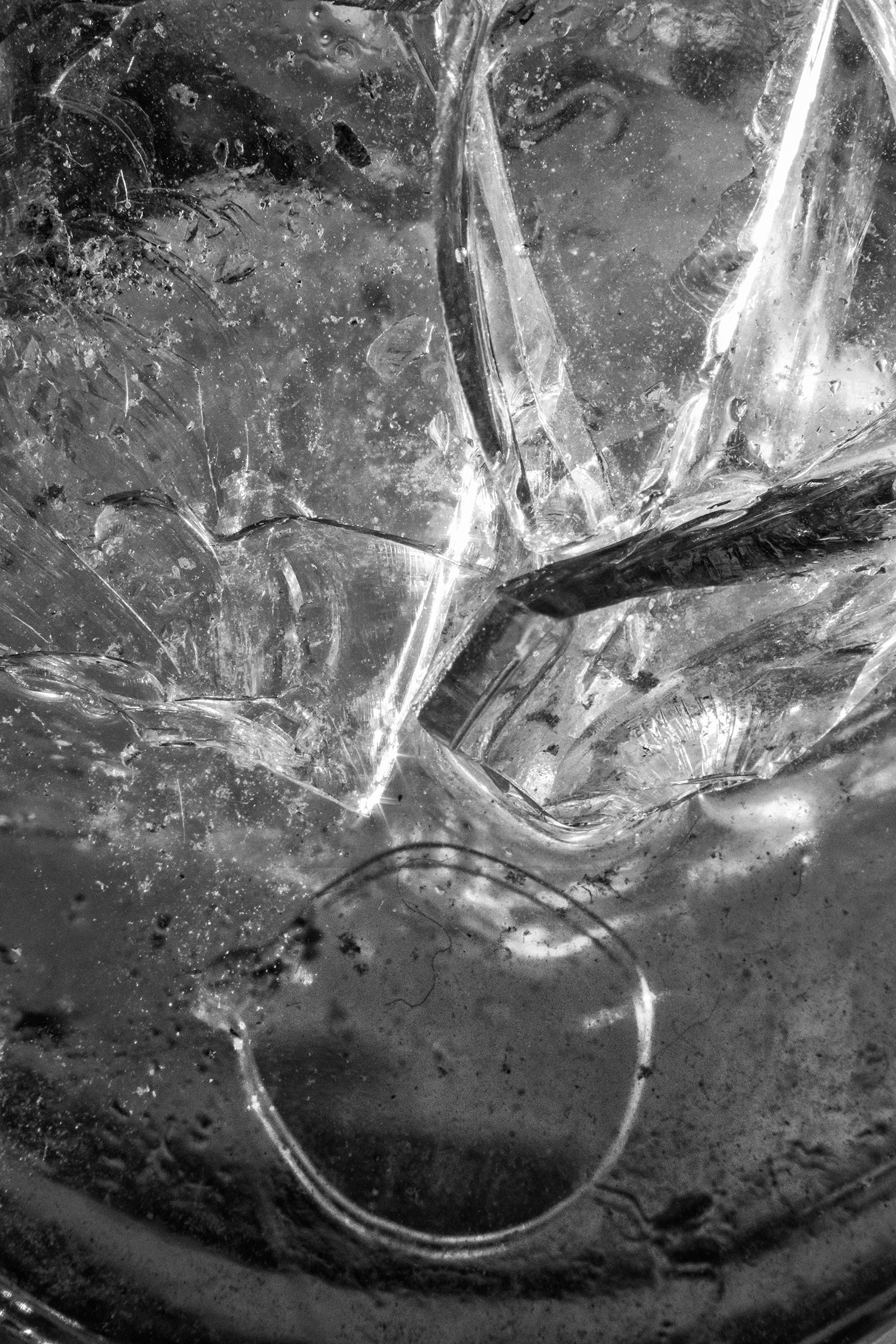
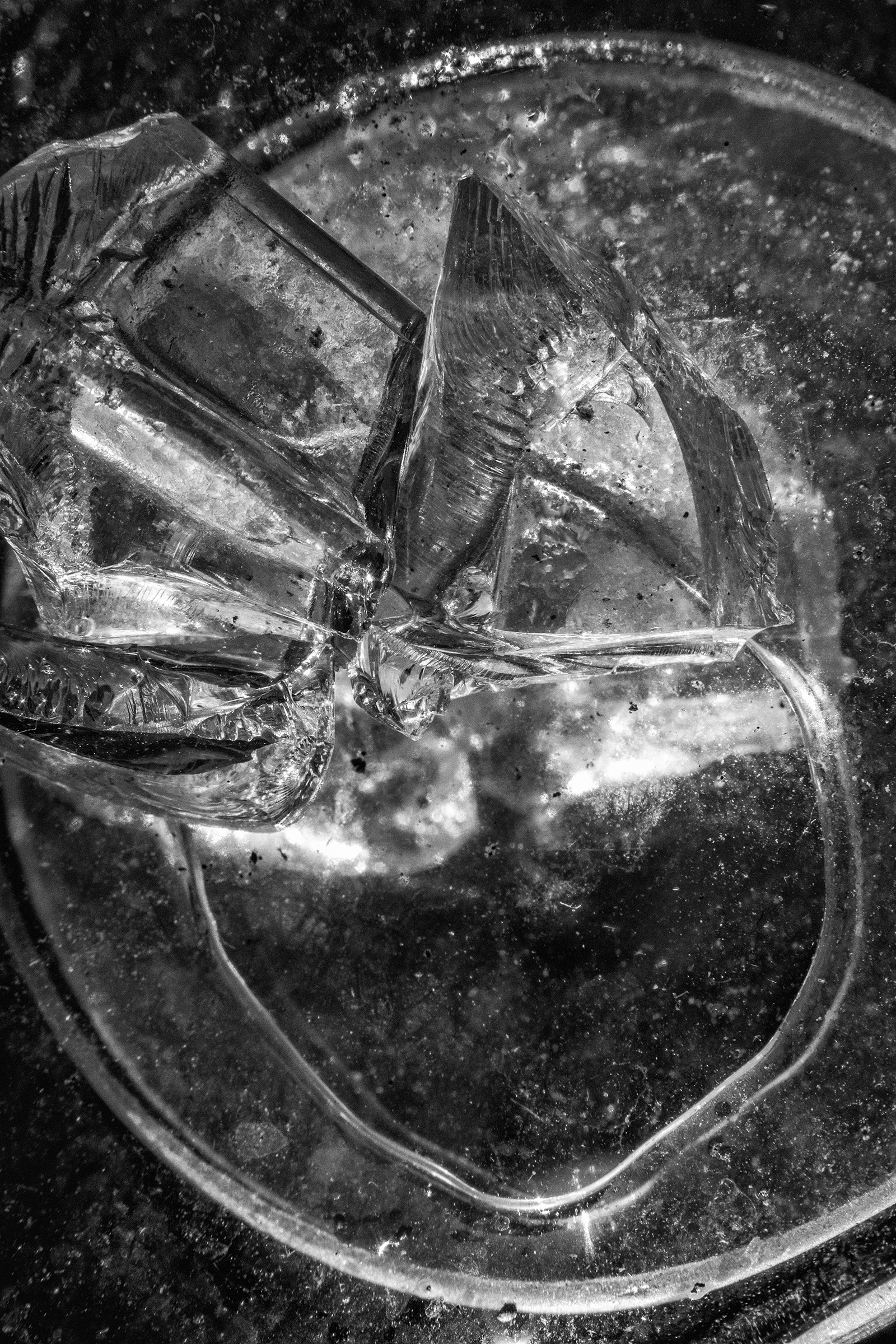
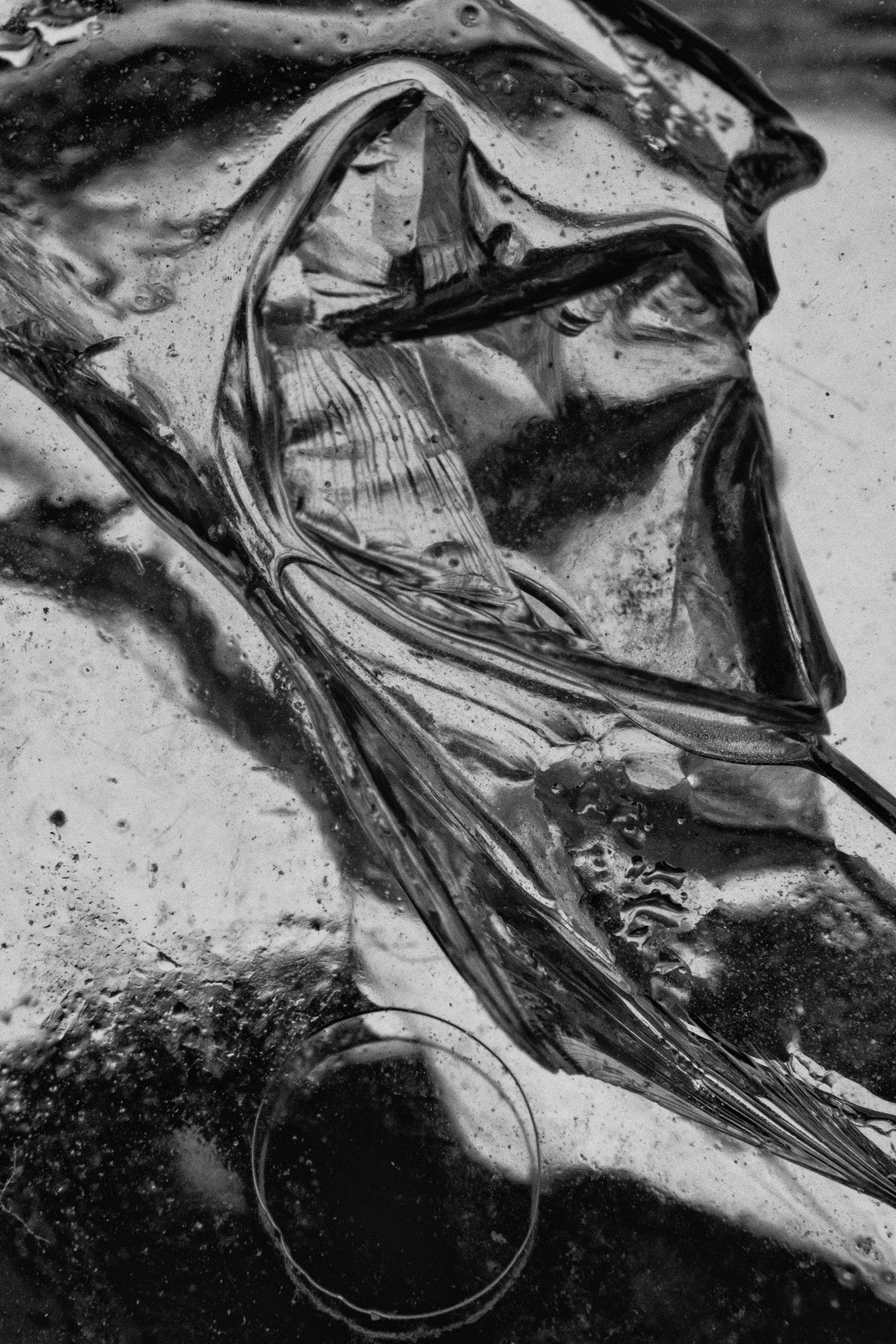
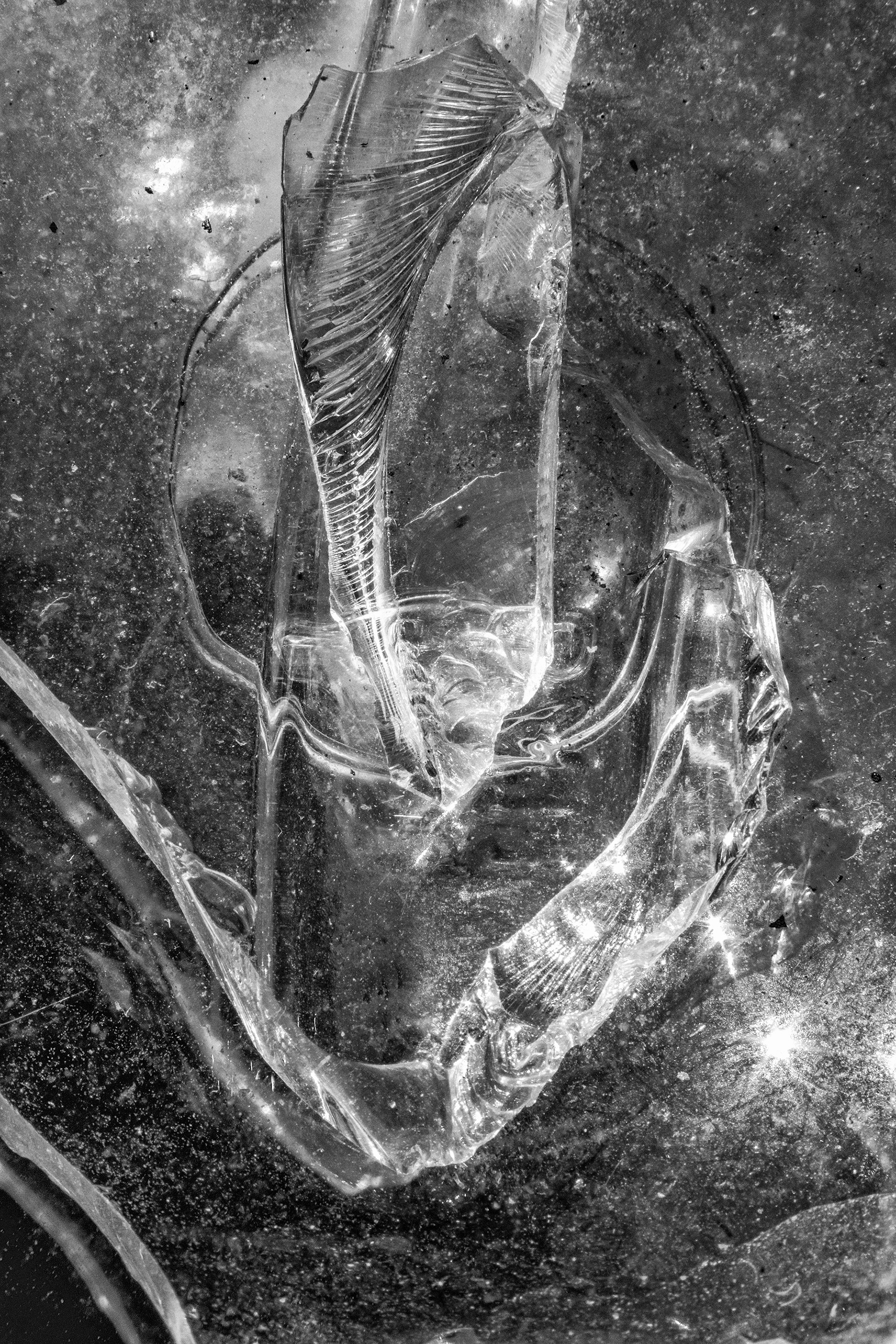
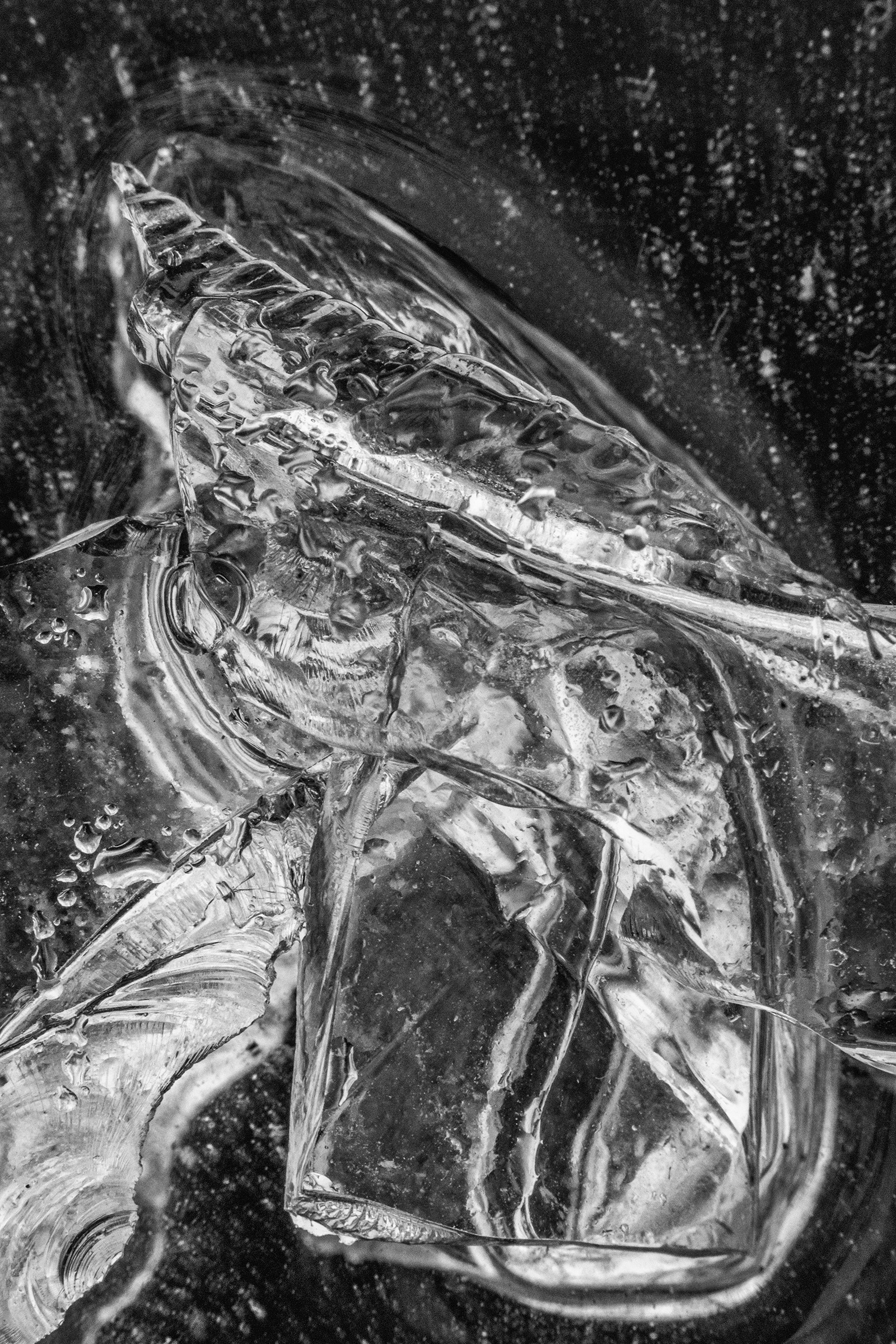
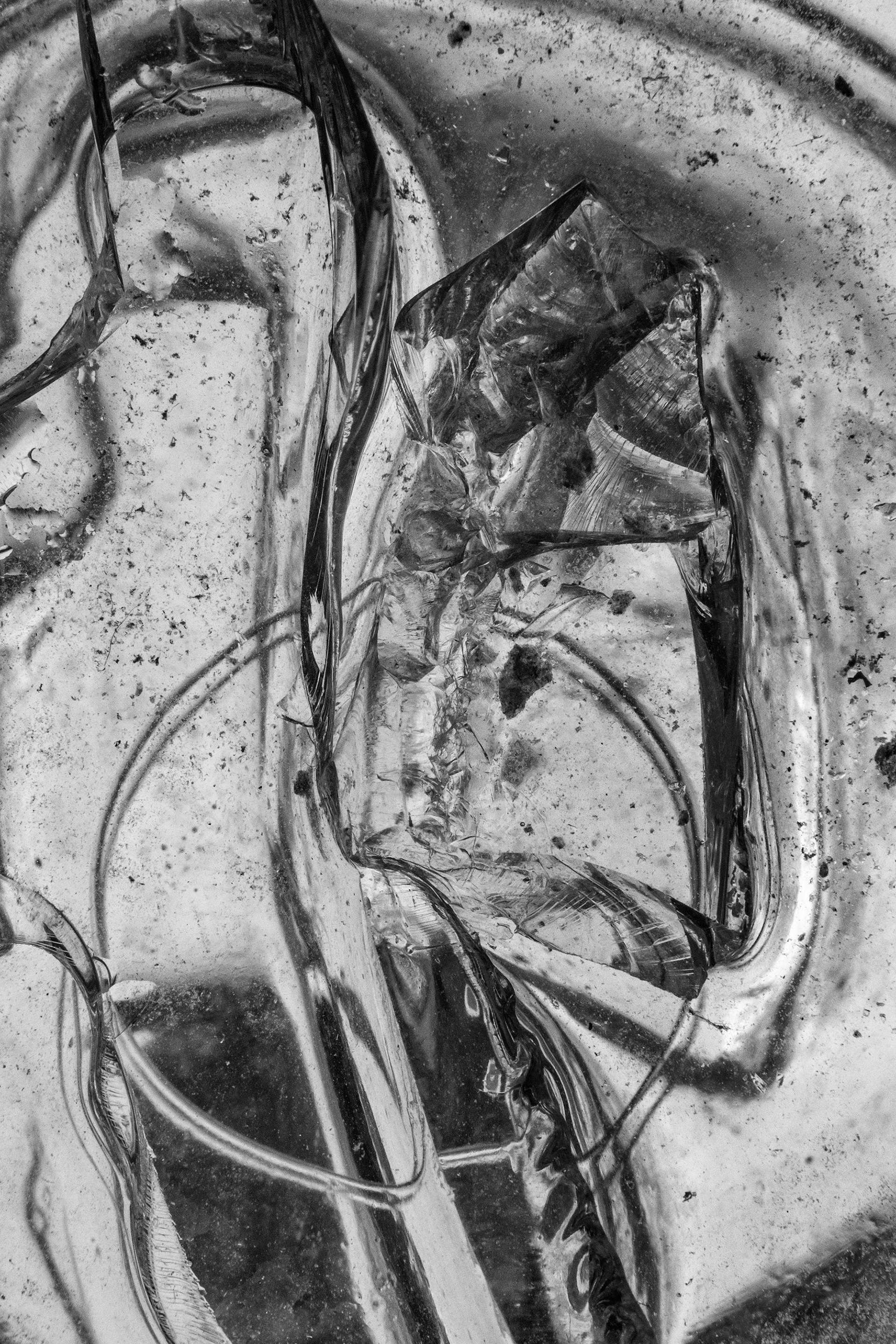
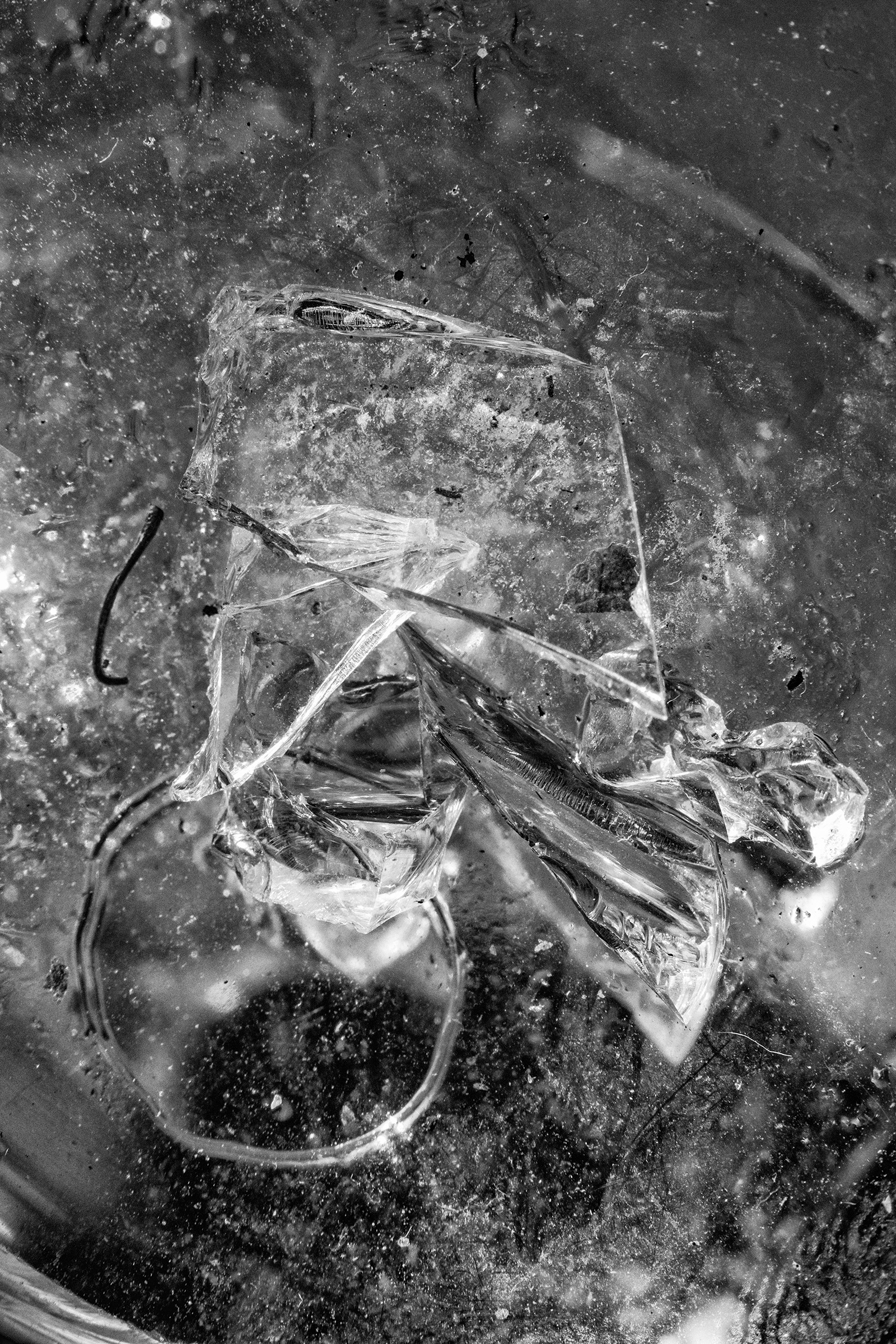
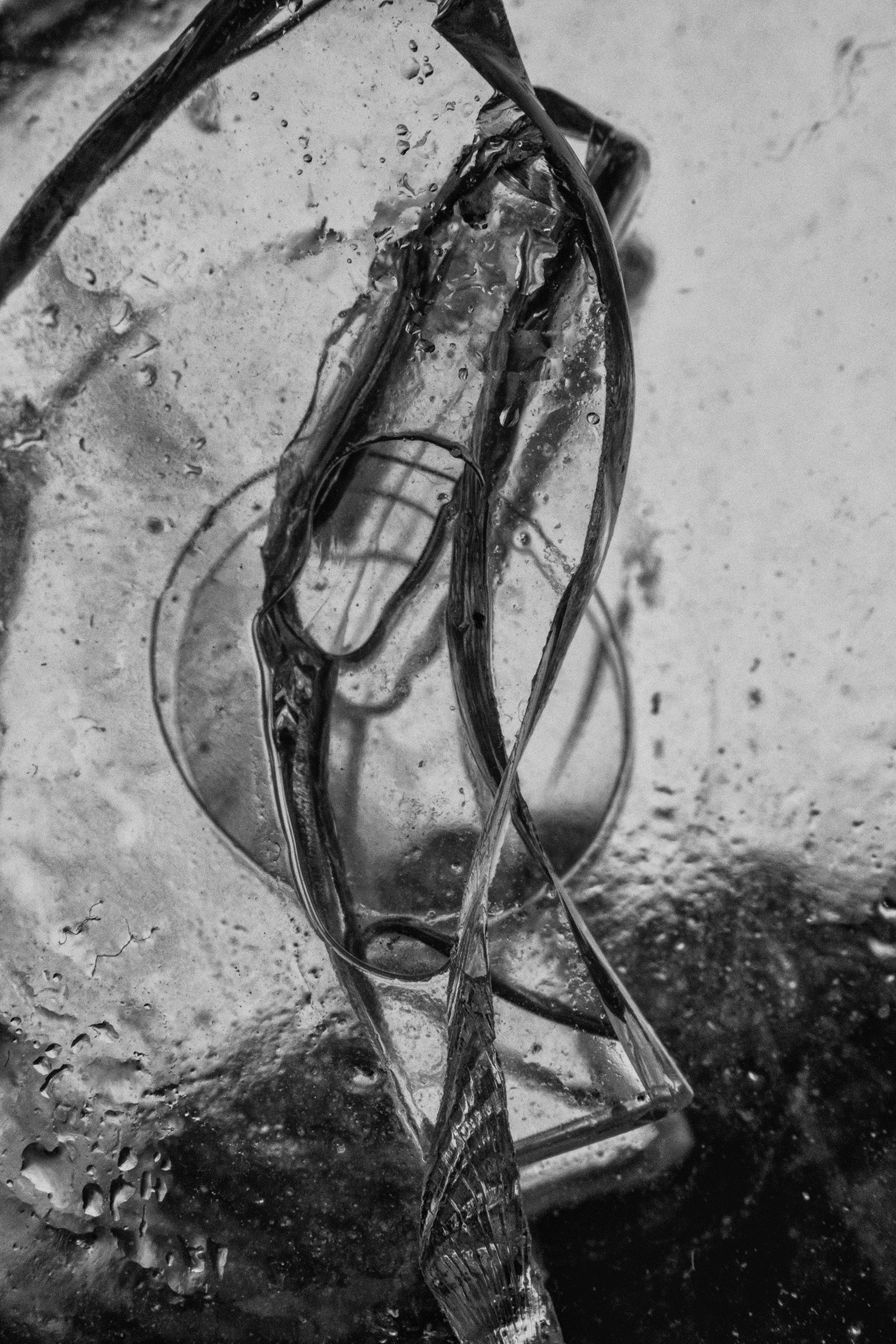
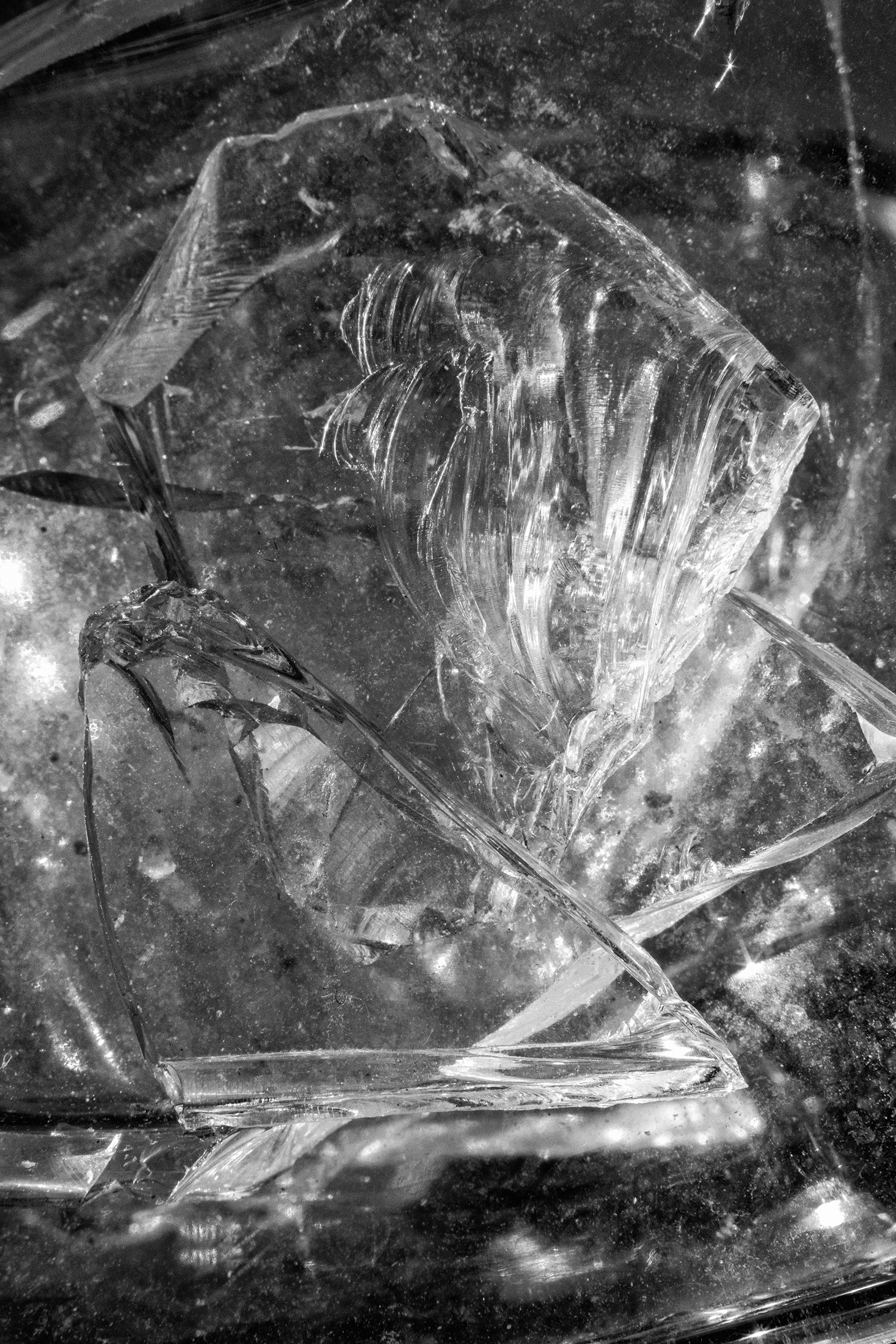
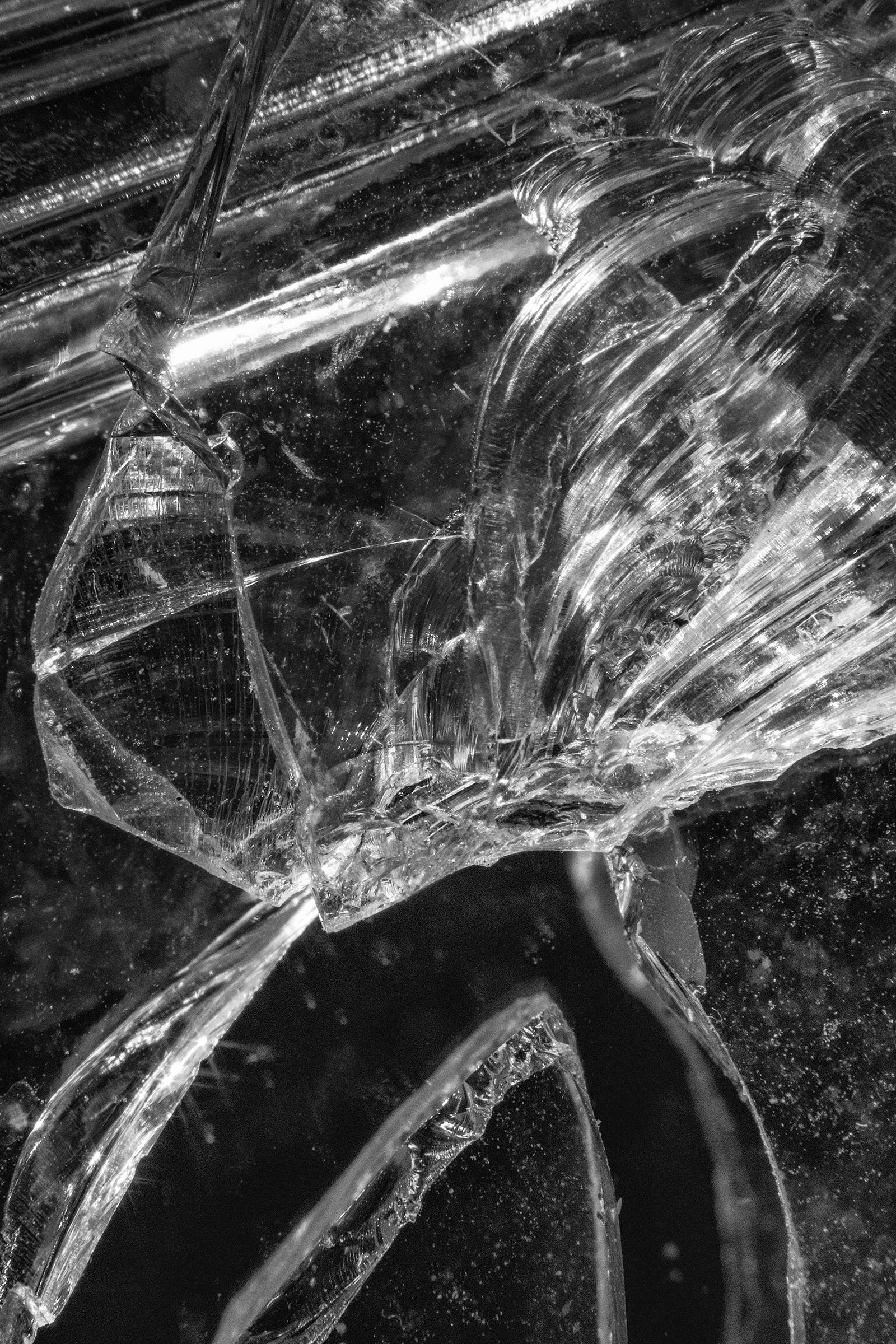
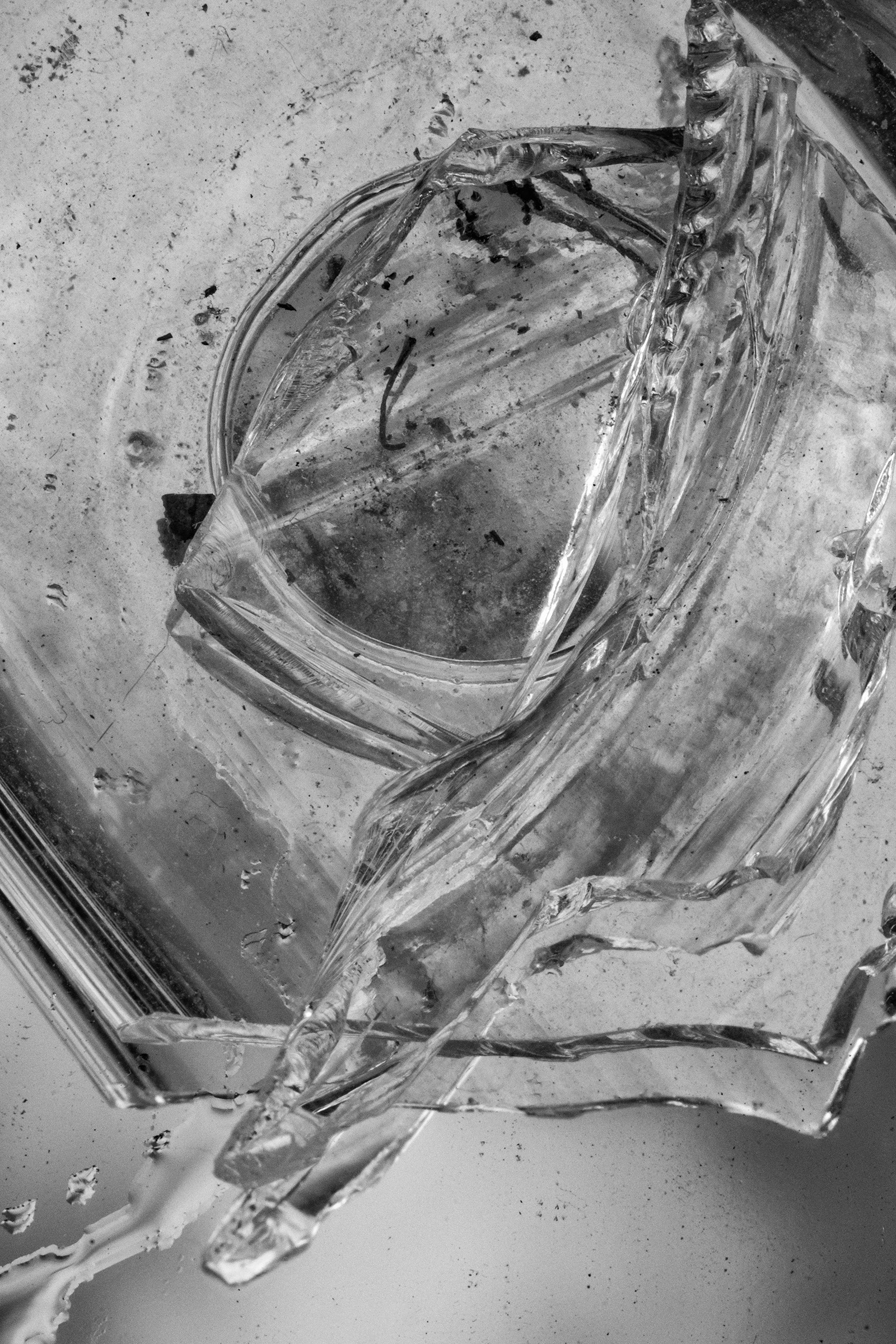
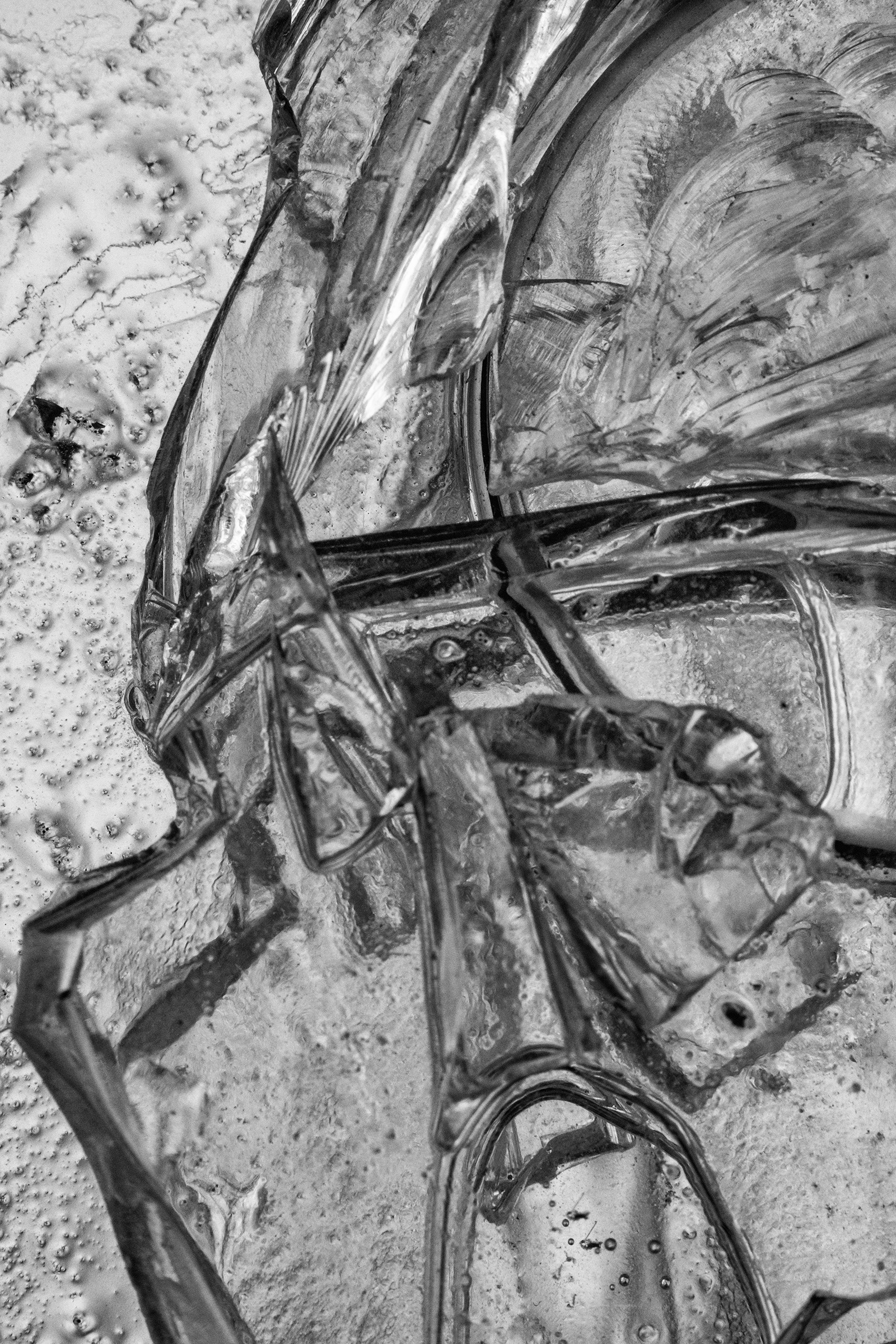
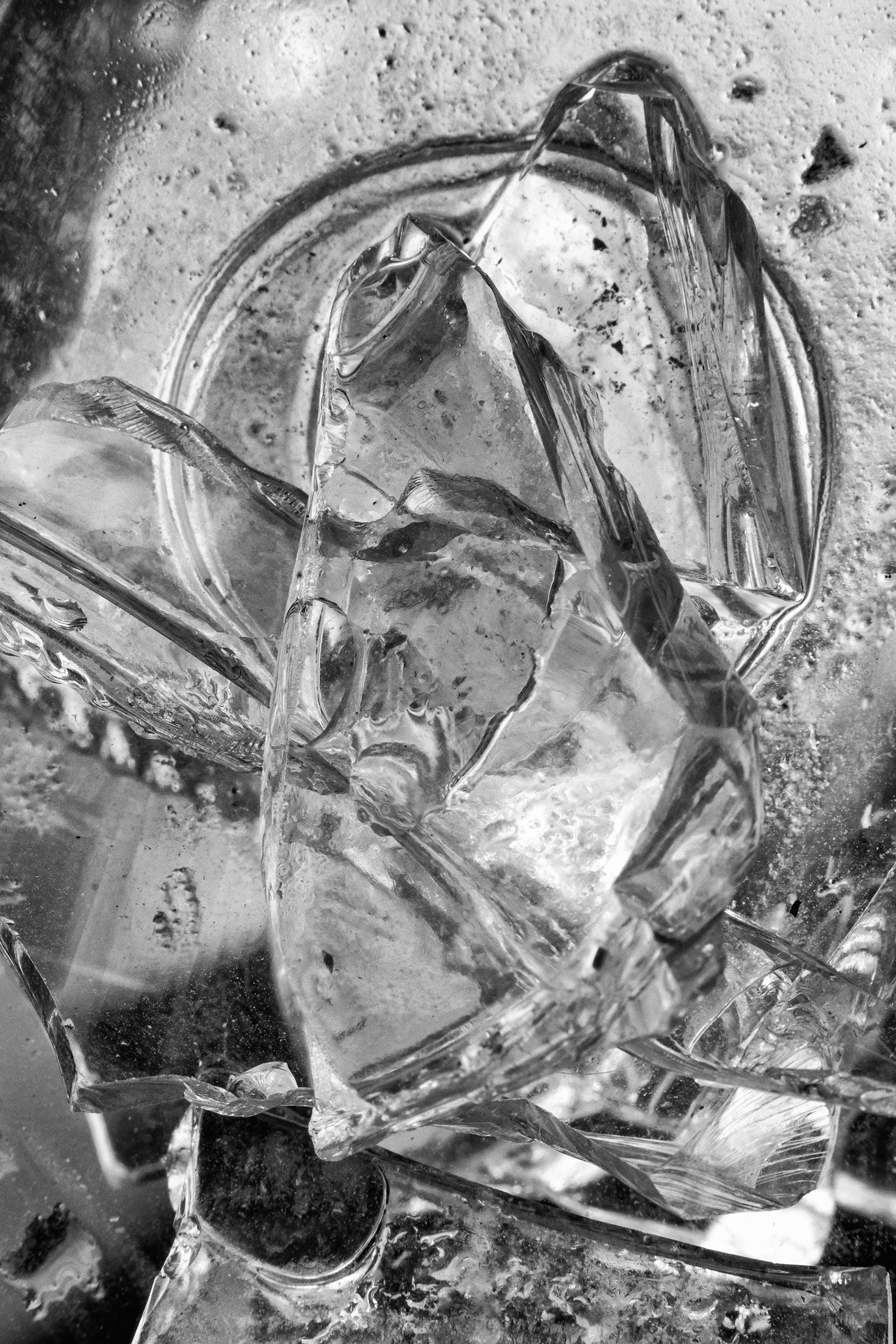
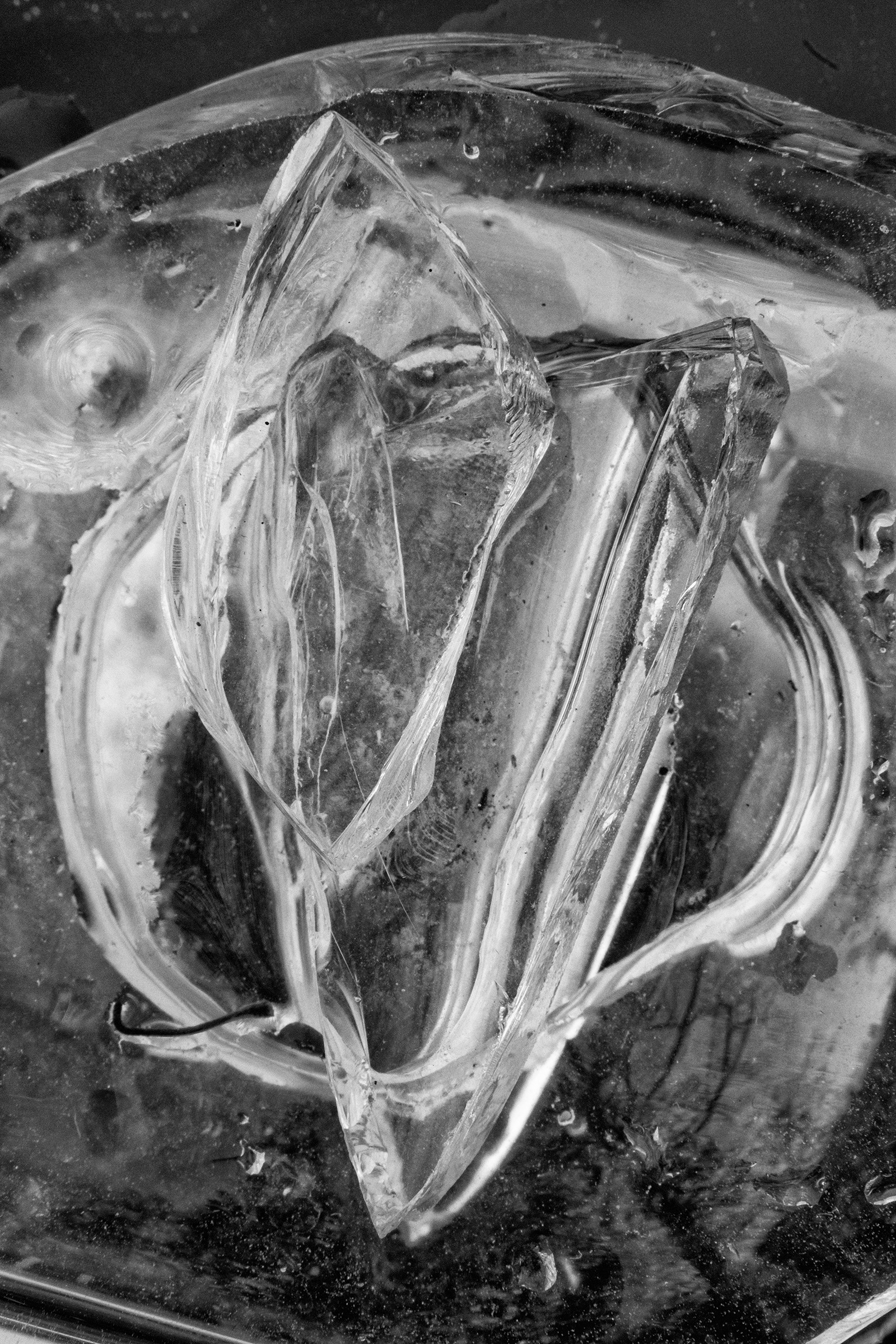
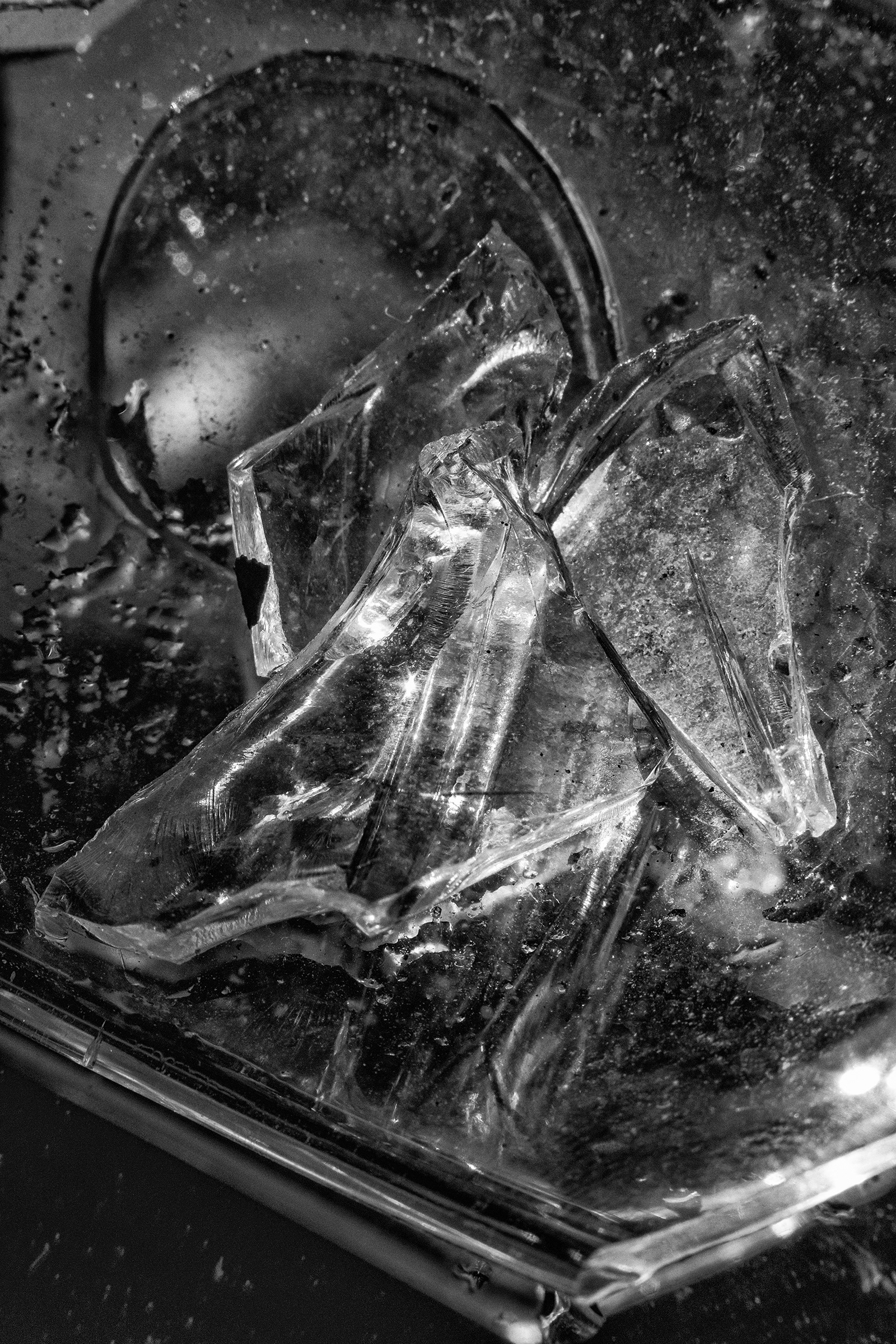
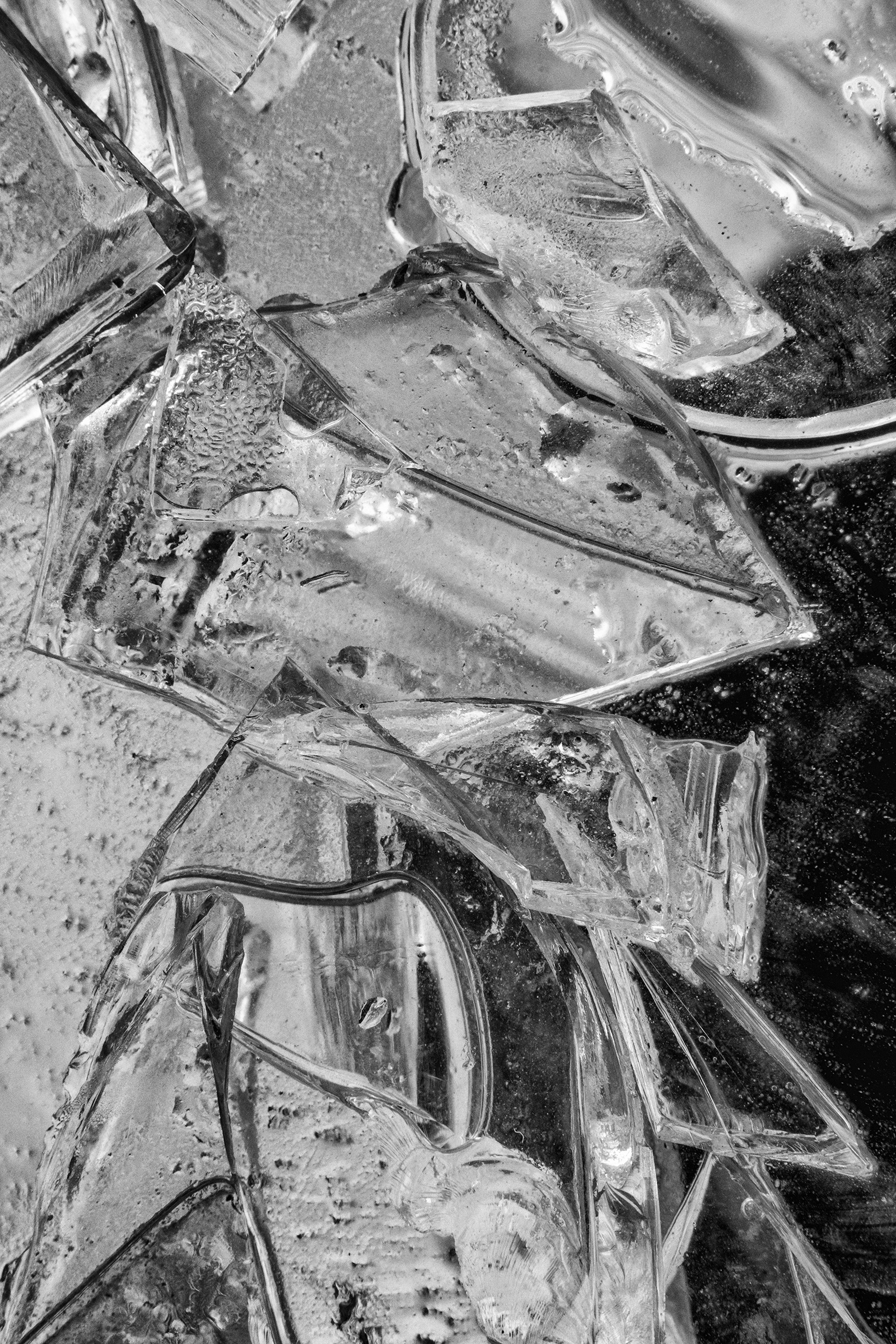



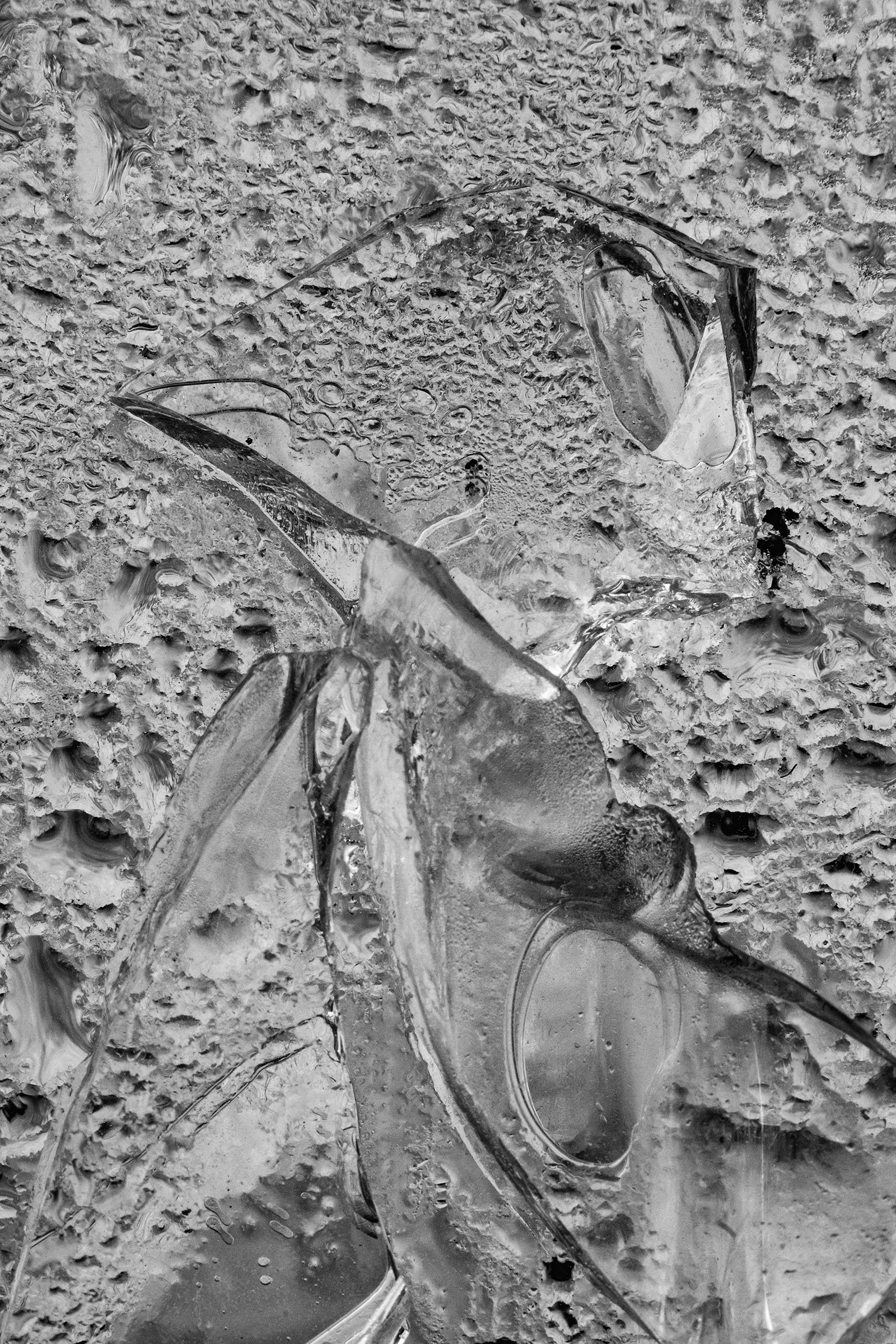
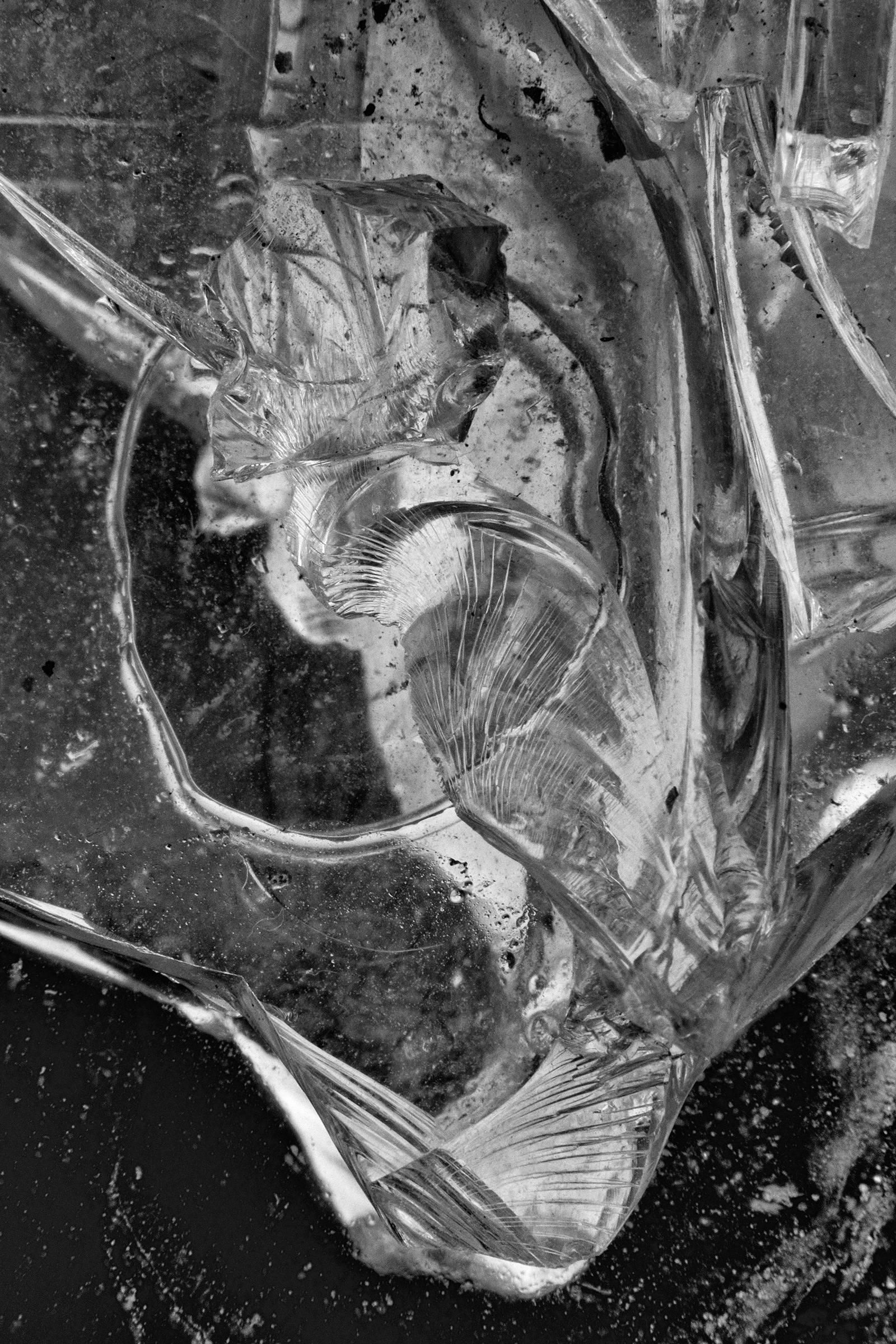
A footnote:
One might say that the Jewish mystical tradition—to point to what else has been in my mind as I have made this work—begins with infinitude and finitude, or call it God everything not-God. The mythology postulates a situation in which infinitude makes finitude by retracting itself, creating as it were a space of dispresence within total presence, an absence within which something can come to exist (noting that about infinitude or God there is precisely nothing to be said, inasmuch as this infinitude escapes all words and all postulated attributes, including “existing” and “not existing”). Into the retraction sailed the emanations of the infinitude, ten spheres or powers by which it became manifest. First among them was the Emptiness Crown, followed by Flashing Wisdom and Discerning Insight. Next came Lovingkindness and Clear Judgment, the former the source of all generosity and forgiveness in the world, the latter the requisite control to keep the world from reabsorbtion into the infinite. Next came the sphere called Beauty’s Ownmost Unity or some call it simply Compassion, which channels these five spheres and two others—Love Acting, also called Grace, and Judgment Acting, also called Prophecy—into another sphere, Potent Foundation, and finally into Self-Dominion, also called the Dome of the Indwelling Nearness. The myth tells us that the ten spheres or vessels proceeded like a fleet into the “space” that the retraction opened for them—what we know as space and time—until at a certain moment they were filled with the energy of the infinite, or call it light or essence, whose effect was to shatter them. Some say that all ten vessels were shattered, and some say it was only the bottom seven. Some say that the shattering happened once, and some say it happened an infinity of times, the spheres repieced over and over until each was itself an extraordinary tessera of all the others. The worlds we know to exist have been formed in the aftermath of the (most recent) shattering of the vessels. Their pieces fell and fell and eventually took shape as the tangible reality of our own world.
This is an admittedly idiosyncratic retelling of certain visions of Rabbi Isaac Luria (1534-1572), whose Kabbalah I grasp only in parts. But to try to see in Luria's terms, it seems to me, is to begin to notice a certain set of relations between the shattered real and the mystical whole: for Luria, if I understand him, the shards of the vessels form each body, each object, each thing we call a thing distinct from other things, each aspect of time we give a different word—second, instant, minute, moment, hour, day, period, epoch. Each thing in its distinctness is a shard, and each shard contains within itself a glistening particle of the primary infinitude.
Or to say it differently: if the dominant myth of our times concerns scientific law—stark facts whose complexity we are progressively learning generation by generation, which operate according to their own nature but for no reason, or for reasons indifferent to human meaning—what to say about the earlier, now subaltern myths, call them forms of knowing hidden within the regimes of knowledge? Perhaps this: that the universe we inhabit is accurately called a World of Repair, a warm name for what science coldly wills a dream to know. And if so, our human perspective is eventually a task: we are those given to see the light within the shards, the essence within the sphere, the invisible within the visible. So seeing, we aid—we return.
Jason Francisco, 2024